|
I'm delighted to participate in The Other Art Fair Global Virtual Edition beginning in May 2022. Welcome to The Other Art Fair’s Virtual Edition, presented by Saatchi Art, running May 23 - June 5. Look forward to dystopian islands of discovery in the sky, 150 new artists from across the world, thousands of artworks for you to view and buy, crypto art installations, NFT projects and art for sale, virtual curator tours, conversations in art podcasts and more… Enter the Fair and discover art differently.
0 Comments
Thoughts about my place on this planet and in this universe are undercurrent to all my work. Quietly exploring wild places everyday, I can see things that normally go unnoticed. Animal interactions are common and day-to-day changes in the land and its inhabitants are more easily spotted. Back in the studio, painting extends that sense of how it feels to be immersed in the wilds, vulnerable, yet uninhibited and fully connected. “Rewilding” and "Becoming Wild" are two recent NFT collections of hand-made, IRL(In Real Life) abstract paintings photographed and then digitally worked like a canvas. Each is a high res, 1/1, digital image, unique in the world, for sale as NFTs(non-fungible tokens) on Foundation and OpenSea in the metaverse. Each includes a brief narrative. You can see details and read about them by clicking on an image and then on "Description." What you see on this page is a brief selection from each collection. Thanks so much for your support. Purchasing my work and commenting are not the only ways you've given me a boost. Believe it or not, every time you "like" or even just click on any or all of my photos and links, you help me get my work out into the world. I sincerely appreciate your help. Expressing artistic creativity in times like these feels uncomfortable. With all of the things we take for granted while others endure torment, even simple pleasures feel self-indulgent. Grief can seem a constant companion. In my experience, grief is profoundly personal, takes many forms, and doesn't just go away with time. Further traumas can set it off and grief can be cumulative. I've been painting for more than 40 years. One thing I've come to realize is that grief is a wellspring for remarkable art. I don't mean that remarkable art is deeply sad. Or that grief is "good." Rather, it is through the wrenching experience of grief that one can begin to understand and appreciate the full spectrum of what it means to be alive. Working alongside grief, with a little luck, and maybe a good therapist, one can better appreciate its opposite—joy. It's about feeling and expressing the contrast, and balance, and emotion—things an artist labors to master in order to make remarkable art. For most of us it's a life-long, work-in-progress. Having a clear-eyed view of the extremes gives "center" a placeholder. From this centered place, remarkable art emerges in the most turbulent of times. It feels urgent to identify and choose the things we do in our lives that bring us closer to personal and collective equilibrium. For many of us, art-making is one way to do that. So please--say it, sing it, dance it, paint it, write it, play it, compose it. Do your thing. Ask for help when you need it. Help others when you can. Keep going. Art teaches us what it means to be human. We have much to learn. See my available work here.
Another year's gone by and I'm noticing some new folks around here. So first of all—thanks! You can't imagine how much that means. I'm Michelle Louis from Wisconsin, USA. A full-time painter who's also a naturalist, I'm curious about how I experience the land, how I feel it deep in my bones, how to express that relationship, and what I can learn from it. My paintings resonate with the seasonal patterns, dynamic forces, and synergies that connect us.
I tend to work large scale, painting with acrylic on big canvases tacked to my studio wall. My drive to paint is indefatigable. I work hard. And I'm honored to have been selected by the curators at Saatchi Art, the world's leading online art gallery, as one of their "Best of 2021." One of the strengths as a painter I've worked to achieve is the ability to silence the constant stream of distraction and self-criticism, connect with earth's natural rhythms, and see what my brush and paint will do. Exploring wild places in nature by myself is another way I'm able to tune in. On these kinds of adventures, I'm more aware of things beyond my usual perception. You might spot them in my paintings. Shapes, lines, and patterns appear, disappear, and then recur. Some make sense to me. Others, not so much. I don’t begin with a sketch or specific thought, but with being open to the emergence of something unexpected, unexplainable. I love the excitement of facing a large-scale, blank canvas. The magic that occurs between the present moment and what comes next reflects nature’s alchemy and that’s where I engage. The natural world is still largely cryptic in spite of our many discoveries. What we understand is based on repeated patterns, methods, and materials. My work is that kind of process. It’s active. It arises symbiotically, holistically, in repetition. It's a map of points in time that leads to the “presence” of a finished piece. Abstract expressionist in process, I'm kind of obsessed with how the natural world communicates with me and how I communicate that relationship. I love abstraction as opposed to more realistic work because it challenges my courage as a painter and your openness as a viewer. I especially love painting big because it allows my whole body to join the process, over and over, in silent rhythm. It's so satisfying and has the added bonus of being great therapy for the painful and exhausting auto-immune disorder I'm working to overcome. Trained in studio art, graphic design, and landscape architecture, my studio extends to our yard, where I grow many edibles, including eight kinds of berries—honeyberries, strawberries, raspberries, aronia, mulberries, goji, kiwiberries, jostaberries, serviceberries. Okay, that's nine. Thinking of adding goumi berries this year. Have you tried growing them? Please share your experience. I love being an artist because it helps me cultivate connection while honoring my kinship to the natural world. Thanks for looking and connecting! You can view my newest series of paintings, still underway, here. Another year's gone by and I'm noticing some new folks around here. So first of all—thanks! You can't imagine how much that means. I'm Michelle Louis from Wisconsin, USA. A full-time painter who's also a naturalist, I'm curious about how I experience the land, how I feel it deep in my bones, how to express that relationship, and what I can learn from it. My paintings resonate with the seasonal patterns, dynamic forces, and synergies that connect us. I tend to work large scale, painting with acrylic on big canvases tacked to my studio wall. My drive to paint is indefatigable. I work hard. And I'm honored to have been selected by the curators at Saatchi Art, the world's leading online art gallery, as one of their "Best of 2021." One of the strengths as a painter I've worked to achieve is the ability to silence the constant stream of distraction and self-criticism, connect with earth's natural rhythms, and see what my brush and paint will do. Exploring wild places in nature by myself is another way I'm able to tune in. On these kinds of adventures, I'm more aware of things beyond my usual perception. You might spot them in my paintings. Shapes, lines, and patterns appear, disappear, and then recur. Some make sense to me. Others, not so much. I don’t begin with a sketch or specific thought, but with being open to the emergence of something unexpected, unexplainable. I love the excitement of facing a large-scale, blank canvas. The magic that occurs between the present moment and what comes next reflects nature’s alchemy and that’s where I engage. The natural world is still largely cryptic in spite of our many discoveries. What we understand is based on repeated patterns, methods, and materials. My work is that kind of process. It’s active. It arises symbiotically, holistically, in repetition. It's a map of points in time that leads to the “presence” of a finished piece. Abstract expressionist in process, I'm kind of obsessed with how the natural world communicates with me and how I communicate that relationship. I love abstraction as opposed to more realistic work because it challenges my courage as a painter and your openness as a viewer. I especially love painting big because it allows my whole body to join the process, over and over, in silent rhythm. It's so satisfying and has the added bonus of being great therapy for the painful and exhausting auto-immune disorder I'm working to overcome. Trained in studio art, graphic design, and landscape architecture, my studio extends to our yard, where I grow many edibles, including eight kinds of berries—honeyberries, strawberries, raspberries, aronia, mulberries, goji, kiwiberries, jostaberries, serviceberries. Okay, that's nine. Thinking of adding goumi berries this year. Have you tried growing them? Please share your experience. I love being an artist because it helps me cultivate connection while honoring my kinship to the natural world. Thanks for looking and connecting! You can view my newest series of paintings, still underway, here.
My new painting, Escape Velocity, seems an appropriate way to end the year. I've been reflecting on the lessons of 2021 and asking myself—how I can use what 2021 has shown us for the better? Let's just say it's been quite a spin both personally and all around. I'm still feeling a little dazed. You? Any wisdom you'd like to share? Please do! Sincerely wishing you, my friends, a healthy new year full of grace, kindness, and wonder—Happy 2022! I'm trying something new—my above painting, Escape Velocity,
is available exclusively as an NFT + physical painting combo. Have a look! My paintings are diverse as the natural world that inspired them. Some are luminously colorful like a garden in spring, while others illustrate the monochromatic contrast of a pine forest under a fresh blanket of snow. Some interpret the sound of wind over dry grasses, others celebrate the comforting earthy smell of rain. For me, painting reaches into the mystery of what comes next and carries it the canvas in front of me. Painting is my flowstate; it sets me free, and lets me honor my kinship to the natural world. As an artist, part of my mission is to share and connect with others. I'm outing my portfolio on web3 as NFTs to bring a greater sense of interconnection, a natural, wild and earthy essence, to the emerging metaverse. Born too soon to be a digital-native, most of this stuff is totally weird and new to me, and maybe to you, too. That's why I have lots of links to helpful info highlighted. If you don't understand a term that's highlighted, click on it to find out. Bridging my work to web3 and the metaverse is a risk. With many artworks in public, private, and corporate collections, I've worked hard to earn my social following and build my brand, and I can never tell how people will react. A few months ago when my son brought up the idea of minting my work as NFTs, like many others, I thought the whole thing was a gimmick. Delving in as a fact-finding mission to inform myself, I've begun to see a nascent world take shape under the flag of decentralization. I see a place where ownership and power can shift to individual artists. Recently, my own business's fragility became apparent when a mega social media platform, without explanation nor response to appeal, revoked the ad account I relied on to show my paintings to potential collectors. Web3 can be a path to progressive decentralization that would prevent such actions. I've learned the hard way how valuable that is. If I'm bringing my work to the metaverse, I want to support decentralization. Carbon footprint matters to me, too. That's why I'm choosing Ethereum. Ethereum's currency, Ether (ETH), unlike other crypto currencies, is moving to "proof of stake" the first or second quarter of 2022. Proof of stake, rather than "proof of work," makes the carbon footprint of ETH 99% smaller. Fingers crossed! In my art career, I follow five steps: 1. Take a risk. 2. Make something you want to see/experience. 3. Go ahead, be vulnerable and share it. 4. Listen, but don't obsess over response. 5. Repeat. I'm taking a risk and jumping into a new frontier of art collection and trading. If you already have a crypto "wallet," when you click to see each of my pieces, maybe even "like" them, it's helpful and appreciated. You can see my first five NFTs for sale here on OpenSea. Each NFT documents one of my paintings and includes a detailed image, description, basic set of physical properties, and an IPFS image link. Select NFTs include a claim for the physical painting as well. Thanks for looking! This summer I worked the same two small paintings every time I needed a change of pace from the large canvases occupying most of my time. Scribbles, scratches, plops, and doodles, these stalwart diminutive paintings are acrylic, oil, ink, and graphite on hardboard, cradled on natural wood. It's odd, but finding retreat and refuge in their surface over many months, I've come to love them. These closing days of October, it feels their purpose has been met. I'm setting them aside now, to begin again. What We Need Is Here
by Wendell Berry Geese appear high over us, pass, and the sky closes. Abandon, as in love or sleep, holds them to their way, clear in the ancient faith: what we need is here. And we pray, not for new earth or heaven, but to be quiet in heart, and in eye, clear. What we need is here. After a summer of haze from the devastating western wildfires made worse by an increasingly warm planet, the skies have finally cleared and it's glorious to see September bring vibrant, intense blue to the world overhead. In that wild blue yonder, shimmering milkweed and goldenrod seeds float and fly with hope for fertile landing, while brilliant fall-blooming asters splash pale pink to deepest purple across the fields and roadsides.
I always feel like things change fast this month- the angle of light, the intensity of color, even the feel of the air goes from cottony-thick to crisp as the natural world prepares for dormancy here in the north. Strategies for surviving a long winter necessitate change and adjustment. Strategies for surviving global warming necessitate change and adjustment, too. When we all consider the things we use every day, like TP, that's a step in the right direction. Here's something—I just saw this graphic from the Natural Resources Defense Council in a Greenmatters article comparing TP brands for sustainability. What's your grade? But more important—will you improve it? That's all for now. It's a busy time inside and out. I'm working on a couple of new projects to share with you soon. Take good care! The intensity and determination of yellow's last hurrah across the prairie is achingly beautiful—if you've been out there lately, you know what I mean. It reminds me that the world we can grasp with our ordinary senses is finite. But beneath and beyond that material world lies a continuum of patterns and rhythms more impressive than our perceived reality. Connecting to rhythms and patterns that are within our reach, but beyond our usual senses is commonplace for most living beings. But our conscious human minds bend us to believe we're separate and apart from each other and everything else. We've become a slack bunch. We need connection, and we need it now more than ever. Like many creatives, I have a tendency to overthink. Overanalysis and self-criticism are not helpful when it comes to reaching beyond our usual senses to connect—the opposite is true. One of the strengths as a painter I've worked hard to achieve is the ability to silence the stream of distractions and self-criticism to see what brush and paint will do. Exploring wild places by myself is another way I'm able to tune in. On those kinds of unfixed adventures, I encounter patterns, forms, and thoughts that are truer, deeper, and richer. You may spot them (or maybe not, and that's okay) in my paintings. My body repeats familiar gestures and movements that create marks, over and over. Shapes, forms, and patterns appear, disappear, and then recur. Some make sense to me. Others, not so much. I'm kind of hooked on how the world communicates with me when I'm receptive. So I keep going. Why does it matter? All of us have the ability to catch glimpses of a picture that is greater than our understanding. Actively working to get a better view of that picture is a lifetime's work. It never looks the same twice. Not to me and not to you, because life experience curates an individual's view. Each of us sees a tiny piece of the whole—an abridged version. Together, our diverse vantage points can help us make sense of rhythms and patterns to illuminate what no single individual ever sees—the big picture. More of that, please. What do you do to help yourself reach beyond your usual senses? I'd love to know—please share!
See details of the above paintings, Flying Gold, and Moves Like This I took these photos before haze from the wildfires raging out west drifted in, dimming the sky's intense blue. These glorious North American prairie natives look like they've evolved specifically to highlight a stunning blue sky and spark the rest of us to do good things. Scorching wildfires and haze may have dimmed the sky's radiant blue, but back in the studio, I remember that blue. I remember the prairie. Be sure to check out my paintings at the bottom of the page. Deep summer. Mosquitoes and butterflies. Fireflies. Japanese beetles. Woods are loudly green and prickly. Sweet corn and summer squash. Pup dozes on cool floor. Deer munch green beans to the very last pod. Cicadas hum. First ripe tomato. Anise hyssop. Purple coneflower. Daylilies. Swimming at Salmo Pond. Pulling weeds. Speckled fledgling robins, baby skunks, and adolescent foxes gorge on fallen mulberries. Here comes the basil. Pesto. Yum. Homemade dill pickles. Hammock in the shade. Waiting for a cool breeze. Drought. Floods. Wildfires. Diminishing food security. Increased competition for potable water. Aquifer contamination. Record-setting heat. Largest reservoirs down 60%. Sea level rise. Habitats destroyed. Bird and bee populations plummet. Mass extinctions. Crumbling infrastructure. Poverty. Political division. Uprisings. Suppression. Pandemic. Corporate greed. A plethora of -isms. Arrogance. Ignorance. Denial. Indecision. Inaction. As they say, if you're not worried, you're not paying attention. Honest-to-goodness, while elated with summer's splendor, I continue to be appalled by the overarching idiocy of my own species. Don't worry, I'm not buying into the doomsday thing, either. Fear and hopelessness drain power and ability to act. And it's the beauty, activism, and innovation that I still see all around me every day that inspire hope—the sky in 2050 will be blue. The challenges we face are not insurmountable. When we love something, we work to protect it from harm. If you're able, I hope you'll take an opportunity to volunteer in or support local public lands wherever you live, in whatever way you can. Convert some of your yard or neighborhood park to native plantings, or just grow edibles on your balcony. Or specifically, help with local prairie restoration here and here. Or actively work to make Earth a better place in any of these 25 ways (be sure not to miss #13!). Please share with those around you (including me!), the steps you're taking, large or small, toward blue skies and a healthy tomorrow for all of Earth's beings. We need each other's encouragement. And we need to hold corporations, as well as local, state, and federal officials, accountable. Thanks for taking the time to read this. I appreciate you. I don't know about you, but now that I'm back out there, meeting friends and actually doing things with bunches of maskless people, I notice how awkward and overcome I often feel. Stilted conversations, forgotten gestures of affection, and out-of-practice manners abound. It's like a garden overgrown with weeds–I want my plants to thrive but just can't seem to get started or find the energy to get things done. Well, the weeding has begun. I'm plugging away at it, slowly, surely, deliberately. Here are 3 Helpful Actions that 18 months of relative isolation have left a bit rusty, as expressed in my recent paintings:
1. Say, "Yes, Please," without expectation or self-absorption. It's a big world full of faces and it's not all about me and my quaranteam anymore. 2. Follow "The Golden Rule." Seems a no-brainer. The hard part is taking the time to truly put myself in others' shoes. 3. Make space in every busy day for "Peace, and Quiet." We've gotten used to a lot of quiet time. A lot. The thrust back into hustle-bustle requires reprieve. Wouldn't it be great if this formidable pandemic left us kinder, gentler, and more receptive? As we launch ourselves into the peopled world after a long, dark year and a half, I wish you a soft and blissful landing. Enjoy summer, my friends! After a long winter's wait, homegrown salad. Yum. The effort to grow as many vegetables and fruits as possible begins its payoff. Did you know I have eight kinds of edible berries growing in our modest yard?
Joining me in their wait for the season's first berries, robins fill their bellies with wiggly worms. Nearby, big fuzzy bumblebees tumble the columbine and young squirrels are practically giddy with the abundance they've discovered their first spring. It's all so exciting! Spotting a pesticide truck cruise the neighborhood, I cringe. It's hard to comprehend people still spraying so much poison in their yards. Disheartening—and stinky. Is the sight of dandelions so disagreeable that we poison everyone and everything around us? Trying not to let it drive me crazy, perhaps the most effective therapy is to thank the kind, bright folks who strive to avoid the stuff. Want a truly healthy yard? You're a champ!. Thanks for being considerate. While it's busy in the garden, I'm still putting in plenty of studio time. Colors and forms have been bold and strong. Someone recently told me my new painting, "Swing the Balance," seen here, reminded them of "pool toys floating around." I love that! But the only pool around here is a wee kiddie pool our pup loves to lounge in on warm afternoons. Here's to almost summer! Enjoy! The energy is palpable. Sky will be interrupted, even blocked, by masses of green that will last until fall. This time of year is exhilarating. Every time I walk outside, birds sing it, insects hum it, flowers dance it. From mighty oak to graceful maple, something exciting is going on and everybody knows it. Sap is rising. Buds are breaking. Leaves are unfurling. Here come the Trees!
I'm off on woodland adventure to one of the trees I appreciate for her willingness to listen, and once in a while, to sing in response. Stretching my arms around her immense girth, I feel a pulse rise through her roots and up through my feet. I thrum back pulses of my own. An energizing reciprocity. I highly recommend tree-hugging. The more hugs, the merrier. To Trees–some of Earth's wisest, most generous beings–thank you. Happy Earth Day!! 11 Things to Know About Trees- Click on the blue link to learn more 1. One large tree provides enough oxygen for a family of four 2. The world's largest tree, by volume, is the General Sherman Sequoia in California 3. Tree shaded surfaces can be 20-45 degrees cooler than area in open, direct sunlight 4. Trees remove pollutants and reduce stormwater runoff 5. Trees provide essential food and shelter for wildlife 6. The oldest trees in the world are more than 5,000 years old 7. Trees communicate with each other and recognize their offspring 8. Trees and plants boost memory, attention, and cognitive outcomes in children 9. Trees help us all feel good both physically and mentally 10. Forests are carbon sinks and help fight Climate Change 11. Worldwide, a football field sized swath of forest is destroyed every second of every day Trees do so much for us. What can we do for trees? See details of my "Talk With Trees" painting here Follow me on Instagram I've been getting lots of questions about my painting process, so, with as little fuss as possible, here goes–
Trained in studio art, graphic design, and landscape architecture, I have a broad background in art and design, and enjoy many techniques and styles. Deeply imprinted to lands I've been exploring since childhood, painting cultivates connection and honors my kinship to the natural world. The last bunch of years, as a full-time painter, I've settled into a sort of abstract expressionism as my process of choice. There's no plan in sight when I begin a painting–no drawings, no sketching on the canvas, no preconceived ideas, just an open mind, a lifetime of experience, some paint, and my brush. Don't get me wrong–I like to draw and sketch, just not as preparation for painting. My painting process flows from the brain through the brush in the moment. It's entirely spontaneous and unpredictable. Oddly, I find the lack of certainty soothing. Painting connects me to myself, and at the same time, frees me from that very same self. It's about willingness to trust. When it's going well, painting takes the snippets and shards that make my life and releases them onto canvas in a voyage of curiosity, authenticity, skill, and perspective. Many of these things are, of course, hard won over time...and...wait for it...experience. Nature knows it. Living humans like me need to remember it. Whether by choice or by chance, we are what we do. We are the sum of our experiences. For the moment, I'm going to keep painting. Then...out into the sunshine! How about you? Hello Spring!! Some things about February are worthy of true love. Between the 1st and 28th of February, we gain about an hour and 15 minutes of daily sunlight- something we can all love. In addition, the sun is moving higher and higher in the sky- about 15 degrees higher here in Madison, WI, USA. I love feeling the light grow more intense, don't you? Alternately, the clear, crisp night sky is something to love in February. Toward the end of the month, we'll be able to view, without a telescope, Mercury, Venus, Jupiter, Mars, and Saturn at various times during the night. Out in the woods, owls are mating and nesting while squirrels are busy raising their first litter of the year. Yep. The season of reproductive love has begun. Even migratory birds are beginning to make their way to northern breeding grounds. I saw my first robin just yesterday. It looked too tired and surprised by the snow and cold to be thinking about love. Valentine's Day brings thoughts of love to our species. I'm given to the idea that Valentine's Day is more about love in the larger sense, rather than the guilt-love fed to us by sellers of chocolate and diamonds. Of course I love my spouse, friends and family. And chocolate. But I'm not stopping there. I love the excitement of standing before a big blank canvas. Woo-hooo! I love the process that accompanies abstraction, as opposed to more realistic work, because it most rouses my courage as a painter, and challenges your openness as a viewer. I love what I do in the studio and while walking in wild places because it keeps me directed toward the sublime unknowable- the place of my heart. My artistic process is a progression of making adjustments and exploring the edges rather than capturing any sort of ideal. I hope you love it. It won't break my heart if you don't. Enough about me. How do you find heart? Where do you find love? Things to ponder this strange, sparkly, chocolatey, red, pink, and love-ly February 14th. Happy Valentine's Day, my friends!! Take care and be well! The above painting collection includes some of my available favorites that feature red or pink, completed in the last four years.
A friend recently wondered what two words I'd use to describe the past year. My answer–complicated and precarious. I'm sure you can do better. But more specifically, when it comes to my own work in the studio, upside down and backwards come to mind. When the pandemic began, I thought to myself, "Isolation? No problem. That's my game. That's what I do every day in my studio."
I'd been expecting a relatively unchanged routine as a highly self-motivated artist, who loved nothing better than spending hours alone in her studio or out exploring the wild countryside. The gut punch was that instead I felt as disengaged from myself and my work as I've ever been. While many of my artist friends were sharing mounds of new work and creative inspiration, I felt oddly thick and stuck. It took a couple of months for me to gain some footing in the new normal. That footing is still precarious, as most of us understand by now. Yet, pandemic and political mayhem somehow provoked a new level of focus, determination, and inexplicably, joy, in my art practice and small business, as well as my spirit. I'm working to amplify the impact of gratefulness as changing norms disrupt my comfort zone. Or in everyday English–being able to say thank you is more important to me than ever. So thank you. You've reached out with words of encouragement and support. You've looked, shared, purchased my work, read this blog, and so much more. I sincerely appreciate every gesture, however small. Too gushy? With so many people unnecessarily silenced forever, I think not. It's no time to be lax, numb, or indifferent. We just passed the one year anniversary of the first diagnosed cases of COVID-19 in the US. In memory of the silenced, to avoid ending on a down note, and for curiosity's sake, what are your two words to describe this year, and what have you come to appreciate more? Hey! You can see the above finished painting here. Follow me on my Facebook Art Page and on Instagram for more studio hubbub. December 21st, the official start of winter in the northern hemisphere, marks Earth's maximum "away" tilt from the sun. In Wisconsin, we'll take in around 6 hours and 22 minutes less daylight than the longest day in June. I don't know about you, but for me that's way too short a day. Plus, it gets blasted cold in my cement-floored studio and I have to don long underwear and drink too much coffee to stay warm in here. Not to fret–the amount of daily sunlight we receive grows after the solstice as we edge toward spring. Though my studio will stay chilly a few more months, additional daylight warms my spirit. Noting the Winter Solstice as both the night of deepest darkness and the return of light is more than an act of faith. For me, celebrating this celestial event honors ancestral abilities to figure out how the world around us works, and our drive to continue doing so. Celebrating Solstice is my salute to brave, brainy, inquisitive human minds throughout the ages. Here's to following your curiosity, Happy Solstice, my friends!!! Grateful feels weird this year. Like many others with high risk for COVID-19 complications, I am not without moments of panic pretty much every day. Nothing about these times is normal or easy, and we all know our daily lives will not go back to the way they were, nor should they.
An artist friend commented on an artist interview I recently did, "I don’t know how you can be that happy in the middle of a pandemic, but more power to you!" My response was, “I know what you mean, but honestly, it's invigorated my thoughts about how precious every moment is. Sounds trite, but dang, it's a lesson I learned young, and the universe seems to continue reinforcing it.” Is it possible to find the positive and hang on for dear life? Choosing love over fear, day after day, can be exhausting. As Mr. Rogers wisely said, “Look for the helpers.” I'm choosing bright, bold colors and wild, loopy forms as helpers. Box breathing is another helper. It really works. So does a vigorous hike in the woods. Writing a note to a friend makes me feel better. So does a physically distanced walk around the block with a neighbor. I thought comfort baking was a helper until I couldn't zip my pants, so it's been downgraded to the "un" helper list. I have no illusions about what a long, formidable winter this will be. Find your helpers. Can we share our humble gratitude for a moment? Happy Thanksgiving, Friends! My last entry was was a hallelujah to tomato red. Well, things have cooled down considerably and I've been all about blue. In surveys spanning continents and cultures, blue, in fact, is the world's favorite color. It's been awhile since I've written about blue and it's worth a reprise. Did you know that blue is an anomaly in nature? While banding a bluebird many years ago, I learned that most critters we think of as "blue" only appear blue. It's optical hocus pocus- birds' blue feathers, insects' blue wings, even blue eyes only seem blue. They contain no blue pigment. Their blue is purely a function of specialized frameworks and the scattering of light. If you pulverize a blue feather, it will no longer appear blue because its tiny reflective structures have been damaged. It will look gray or brownish. Contrast that with beets- they remain red when crushed because their color comes from pigment. Nature produces only a wee handful of blue pigments. A few minerals, such as lapis lazuli, azurite, and cobalt, can be ground to create blue pigment. Blue dyes can be conjured from a minute number of plants like woad (Isatis tinctoria) and true indigo (Indigofera tinctoria). Historically, painters know blue as the rarest and most expensive of colors. Most of the blue dyes and pigments we use today are synthesized. Blues range from deep teal to rich indigo, and have been significant in human culture for at least 5,000 years. The mantle of the Virgin Mary, Egyptian mummy linens, and the Hindu God Krishna's clothing, have often been depicted as blue. In some religions, blue is the color of the 5th chakra, and indigo is the color of the 6th chakra. Blue is said to be the color of wisdom, intuitive knowledge, and transformation. Blue conveys integrity. It makes us feel calm, yet vibrantly strong. If you're affected by a prevalence of negativism and fear-mongering, it may be time to roll out the blue. Choosing to be surrounded by color, grace, and resourcefulness in discordant times is empowering. It invigorates our senses and emboldens our creativity. It makes the muses frisky. And that's where real magic happens. PS- I'm going to be clever now, and confess that my favorite color is whichever one I'm squeezing out of the tube. What's yours?! PSS- If you haven't voted yet, now's the time. Is my sudden blue obsession a less-than-subtle nudge? You'll have to decide. Be well, my friends of all chromatic persuasions. See the details of any painting by clicking on the image.
To see more of my "Blue" paintings, click here. Why is the sky blue? https://spaceplace.nasa.gov/blue-sky/en/ Is the sea really blue? http://www.bbc.com/earth/story/201505226-is-the-sea-really-blue Oh golly, do I have tomatoes on the brain. For weeks now, I can't stop seeing tomato red. Literally bursting in the garden, a rouge party of Brandywine, San Marzano, Jaune Flammée, Amish Paste, and Sungold gathers on the cool countertop. The kitchen is rich with the steamy scent of garlic and tomato. Over 100lbs processed so far–fresh, frozen, canned, sun dried. Even homemade ketchup. I'm going wild in the garden, the kitchen, and in the studio, soaking in these bountiful days, putting up yum for the colder days to come, and painting the plenitude. Grateful for a distraction from the day after day monstrosities occurring near and far, maintaining physical and mental health these days is no small thing. Who knew tomatoes could be salvation? Can homemade ketchup bring enlightenment? Definitely maybe. The last few days, though, I've noted a pull to begin cooling things down with some calmer blues. We'll see what comes next. Meanwhile, I wonder–what are you doing to be well? What simple things lighten your heart? Thanks for taking the time to read this. Please take good care. And if you like tomatoes, now's the time! Click on paintings' photos to see details.
My smaller Quarantine pieces are still available for a limited time. If you've been wanting one, this is your chance! See them here before it's too late. When this quarantine began, was I the only one who imagined it would be over relatively quick? Well, half a year later, a pandemic, with no end in sight, is still testing our mettle. To the family, friends, and acquaintances who've helped me get to today, whether with a "safely distanced" walk, a video chat, or a simple "like" or kind comment on social media, thank you. It all helps. As the heat of summer cools toward autumn, I've been thinking more about thank you. The Quarantine Collection is my simple gesture. As you know if you've seen my work, I love painting big! But I get it. Big paintings take up a lot of space and are less affordable. Well, during this time of isolation, I've painted some smaller pieces and it's a win/win. The original paintings in this collection are the lowest price I've offered in years. Plus, your purchase supports these inspiring organizations–Black Votes Matter, Rainforest Foundation US, and National Women's Law Center. They'll receive 40% of the profits from your purchase. If you've been wanting to own one of my paintings, this is your chance. My 12"x 12"paintings normally sell for $500. These are just $225 each. The metallic gold, gem-like 9" x 12" pieces are a steal at $200. Perfect for any room, or as a housewarming or holiday gift. They're great in pairs or groups, too. Remember, 40% of the profit goes to uplifting causes. All paintings in this collection are acrylic on archival hardboard, mounted on cradled wood with a natural finish, so framing is not necessary. Ready to hang, these original, one-of-a-kind paintings are signed on the reverse. Sales are through an Etsy shop I set up just for this collection. This is a limited time offer and will end in September. Whether brightening up your home office or getting some early holiday shopping wrapped up, now's the time! A big thanks for your consideration. I truly appreciate you. Feel free to contact me with any questions. And be well! Two days ago, while leash walking our dog, he snatched a baby rabbit hunkered down alongside the path. He did it so fast, I'd have missed it if not for the piercing squeak, and tiny feet momentarily dangling from his mouth. One gulp, and bye-bye bunny. I was horrified. And I was wrong. He wasn't being a “bad” dog. He was just being a dog.
As Homo sapiens, we like to distinguish ourselves from other animals who simply follow their instincts. That in itself is a hotly contested topic. Regardless, our imagination, ability to think abstractly, and ingenuity have tipped the evolutionary scales greatly in our favor. This rise to dominance is also our curse. We make choices under the delusion that we can separate our own well-being from that of the rest of the world. But survival of the fittest is an incomplete story. Nature is a continuum composed of a multitude of living things and interactive systems. Research is demonstrating that cooperation is a key driver in evolutionary success, What I do as an individual is inescapably about what I do to the rest of the planet. My daily actions mark my direction as surely as fossilized dinosaur tracks on long-gone shores. These days, when I read the news, I'm pretty sure that in spite of evolutionary success, we are the most reckless, idiotic species ever to walk the planet. Still, I believe in us. But the stories we currently tell ourselves and each other limit our vision and restrict our possibilities. Humanity is at a critical juncture–Can our ingenuity and imagination help us open up the world in new ways that bring real ecological awareness, social justice, and unity? Can we stop being so selfish and take the long view that considers balance and well-being for all? Please say, “Yes.” Listening, processing. I believe change for the better is coming. But first it's going to get much more uncomfortable as we reckon with centuries of injustice, pain, and fear. That's why I need to keep my eye on the good that will follow. See details from above painting, New Wings. See details from below painting, Sun 1 (Flowers). See details for below painting, When the Lilacs Bloom. 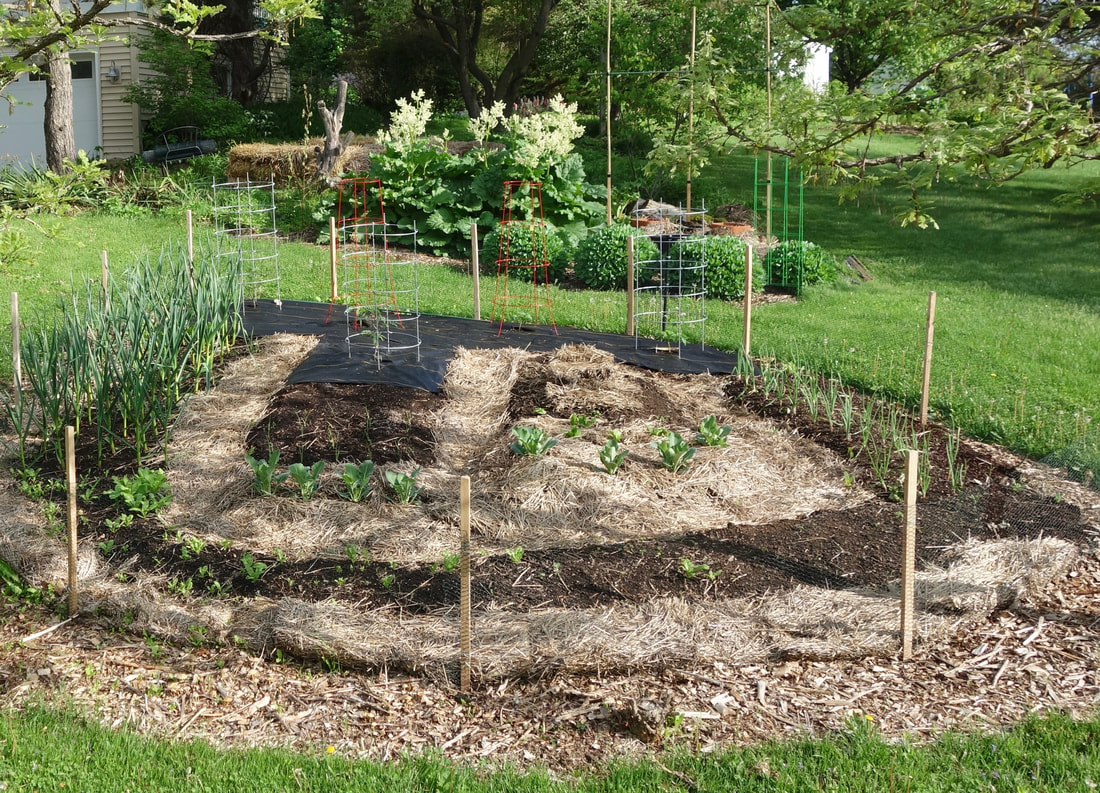 This is my "social" veggie garden. It's planted along the street. Passing neighbors stop to ask questions or chat. Favorite moment so far this year–a 4 year old neighbor gleefully shouted from the road, "You look like an old farmer in that big straw hat." His dad quickly interjected, "Not OLD farmer." with a wink. |
Author
Artist and naturalist Michelle Louis has a vigorous curiosity about the natural world. Her energetic, investment-quality paintings bring balance and harmony Archives
June 2024
©2023 Michelle Louis All rights reserved. Content and images are property of the artist.
Categories
|
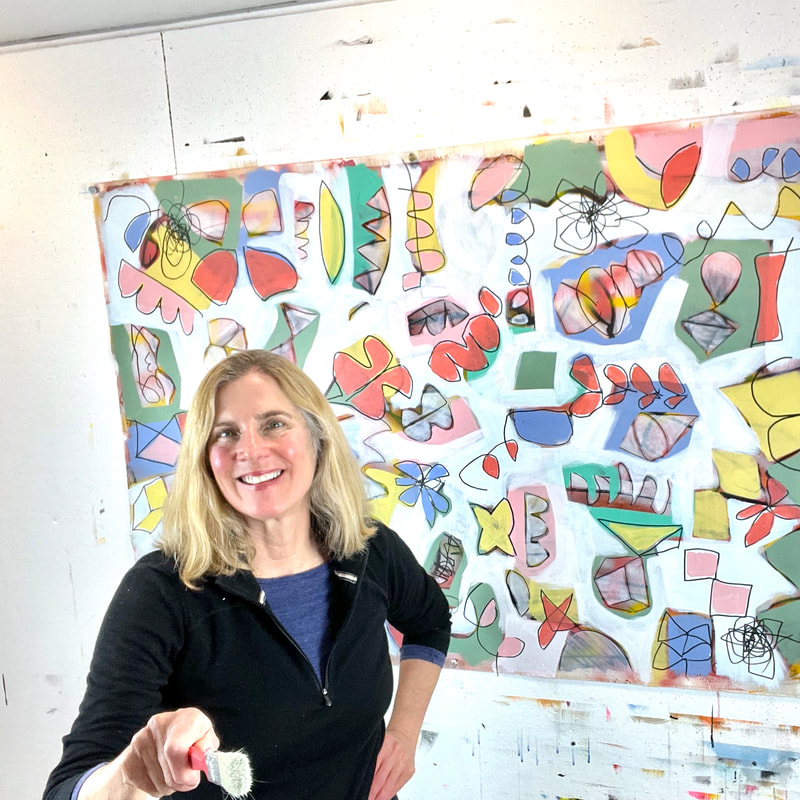

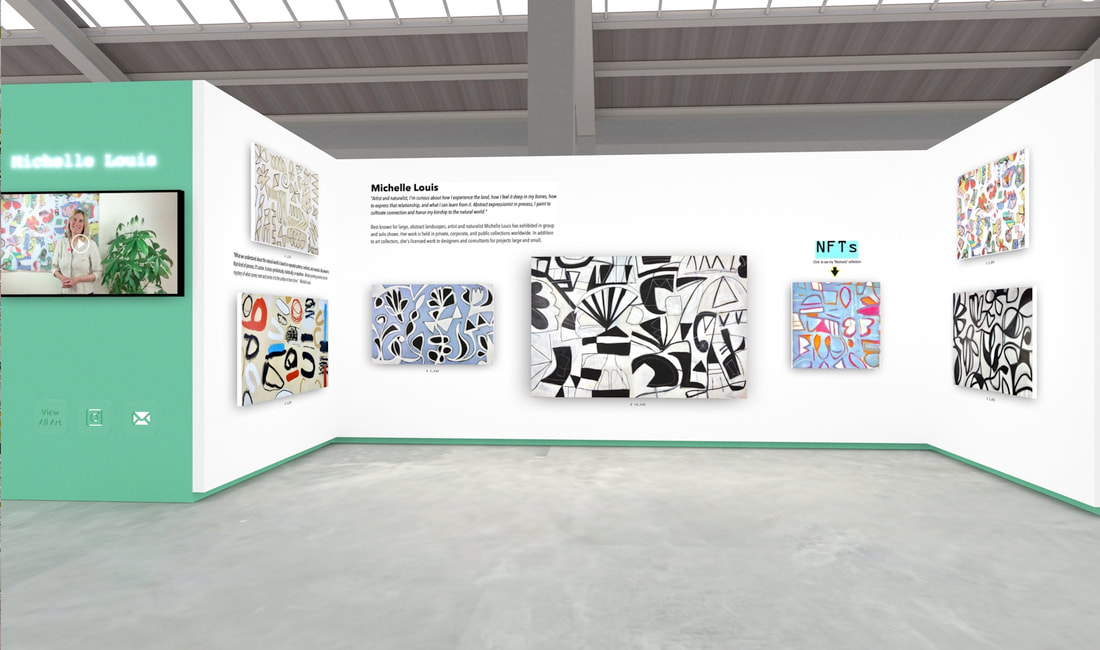
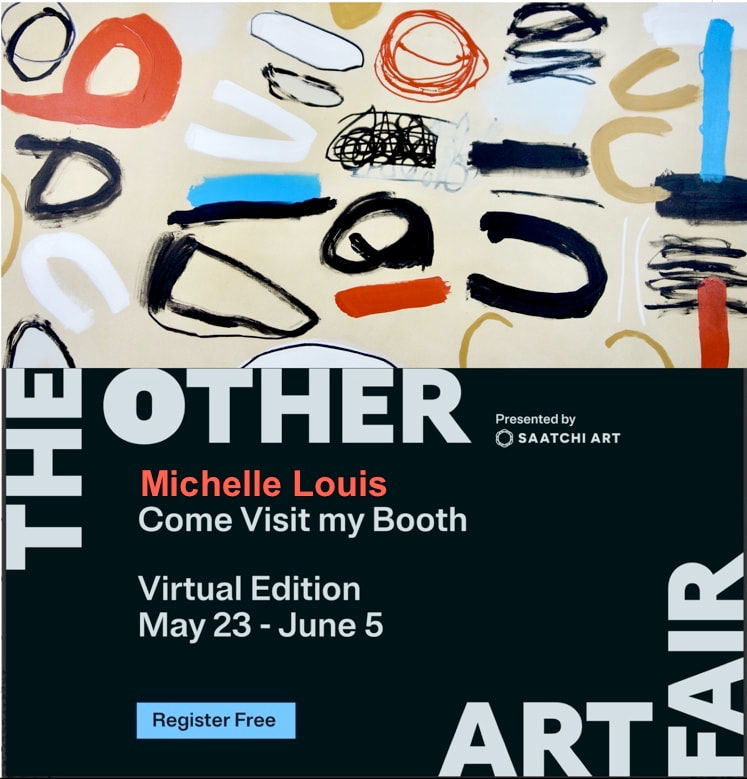
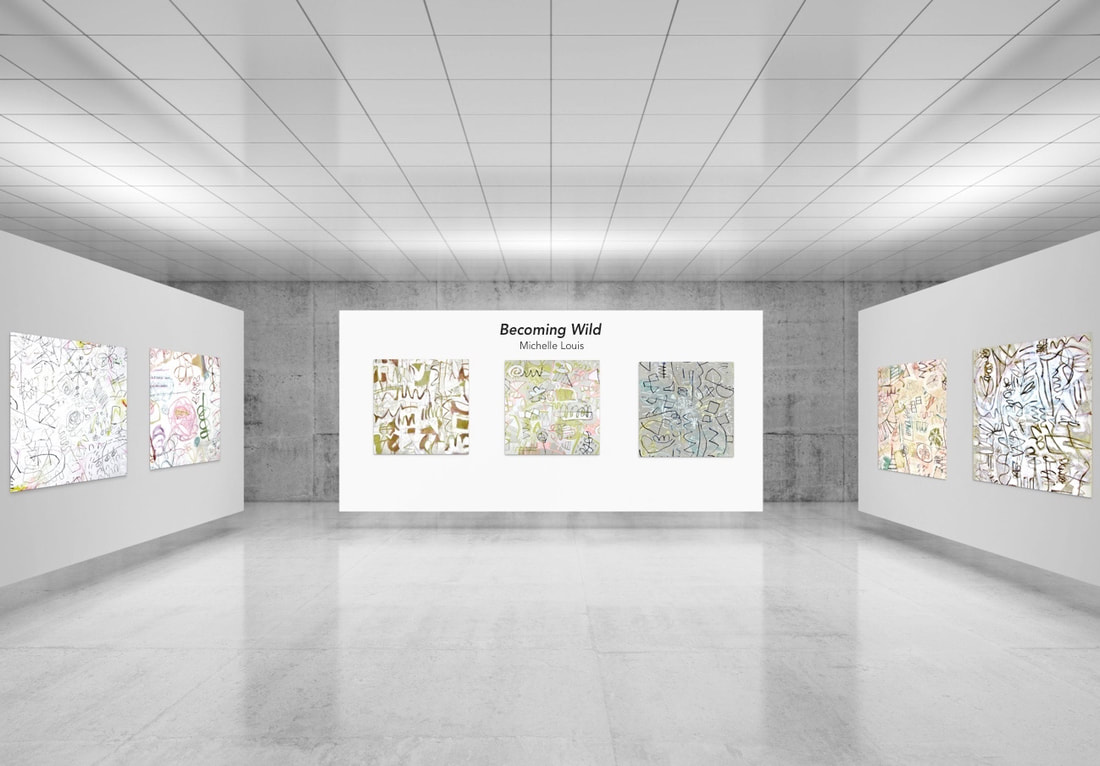
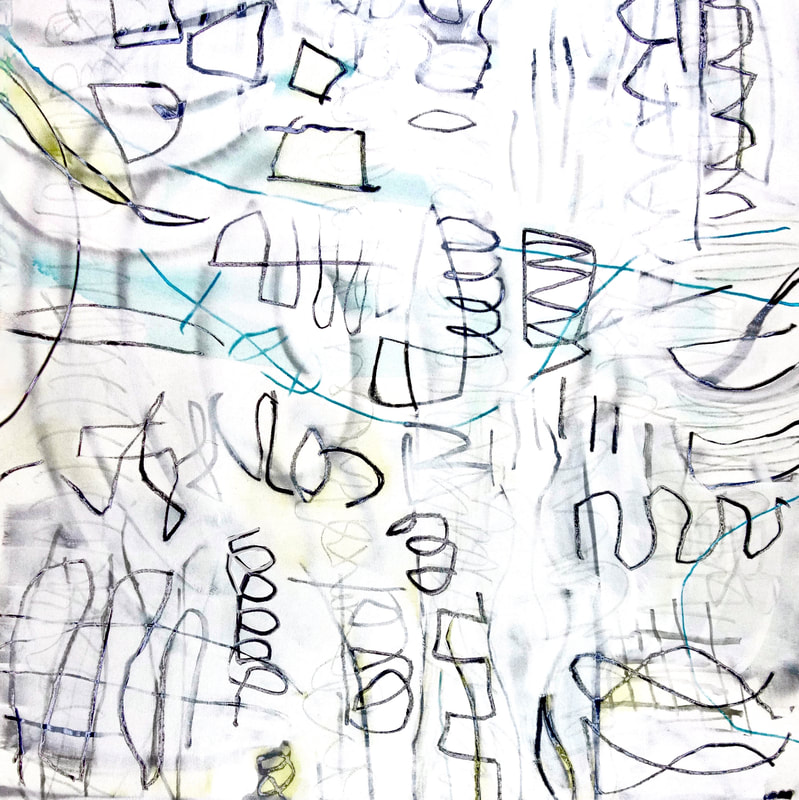
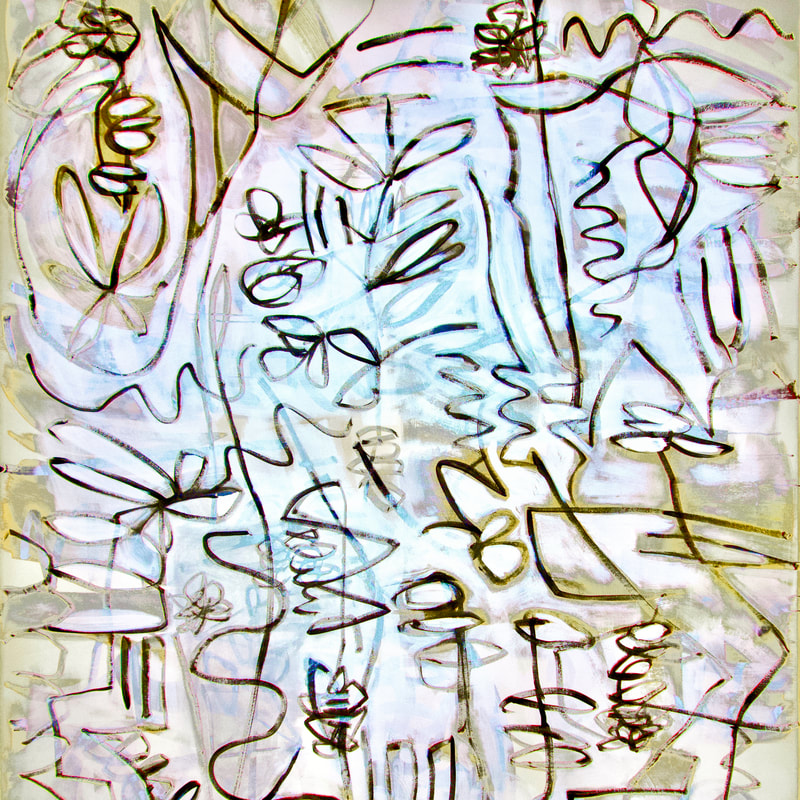
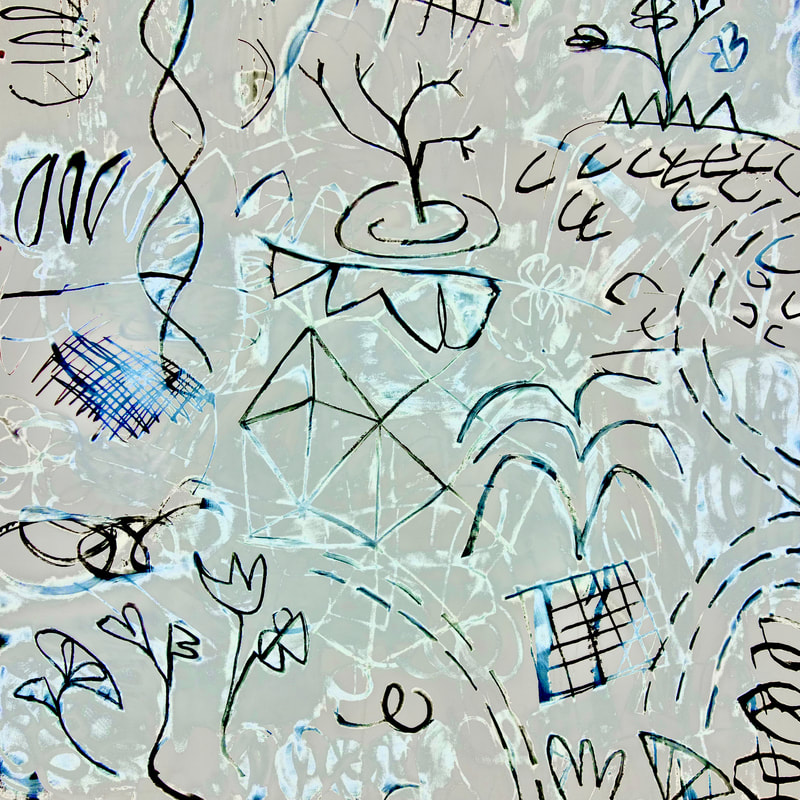
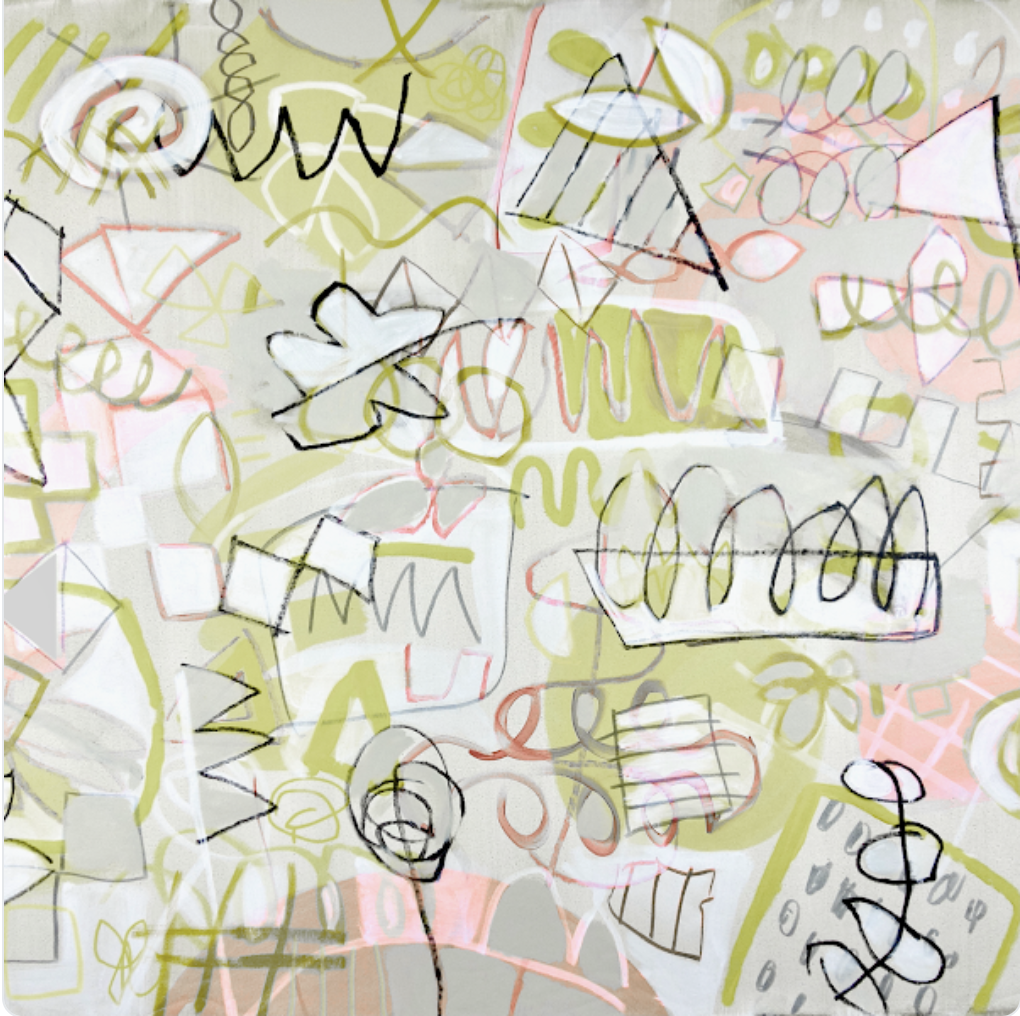
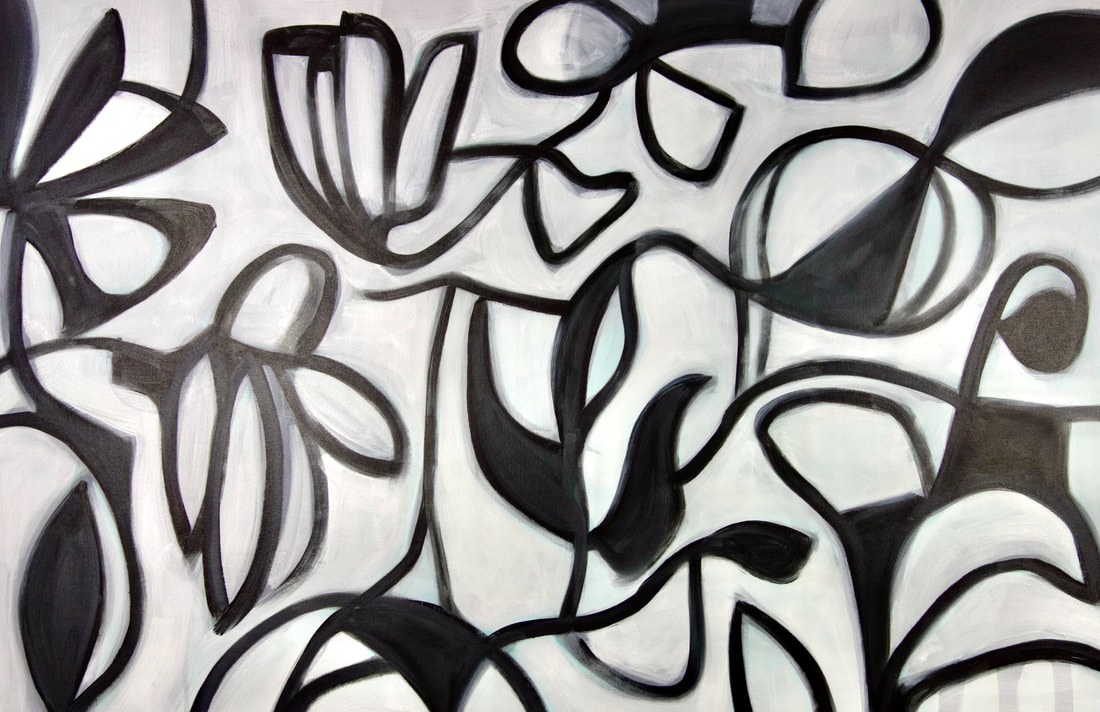
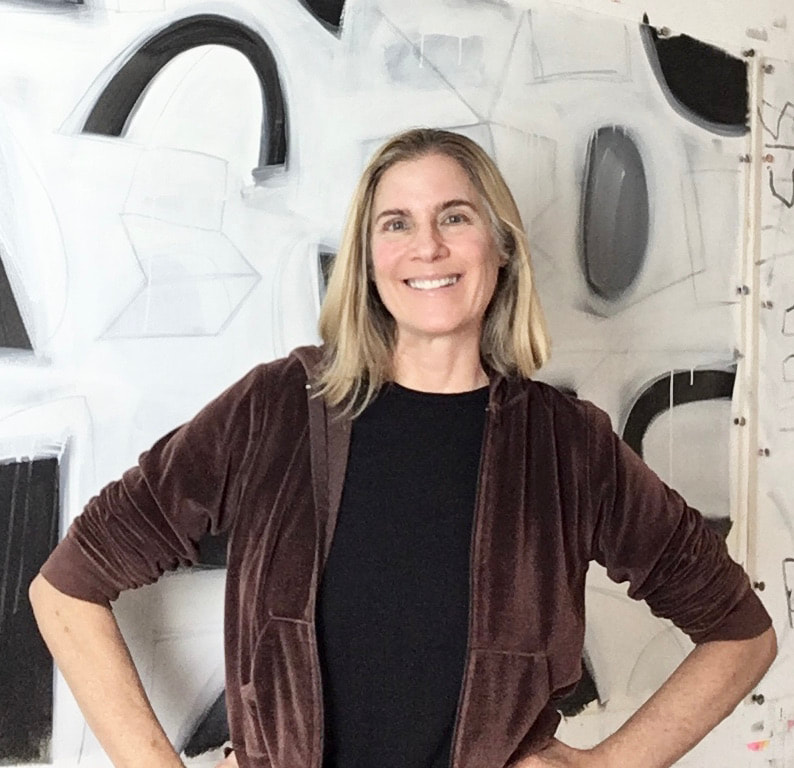
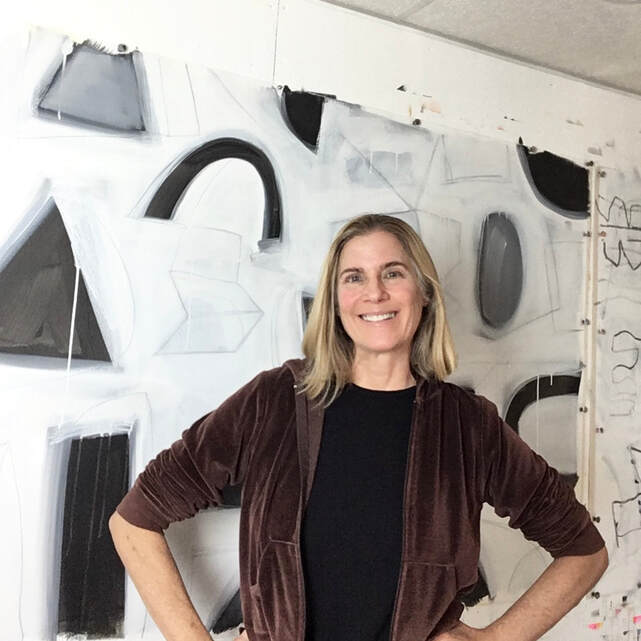
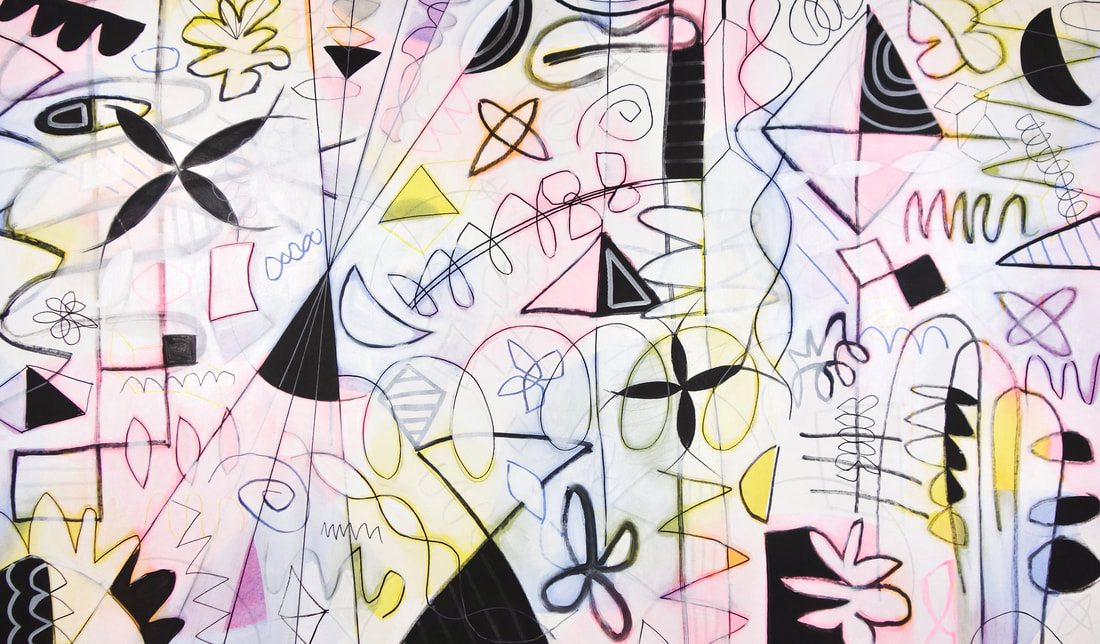
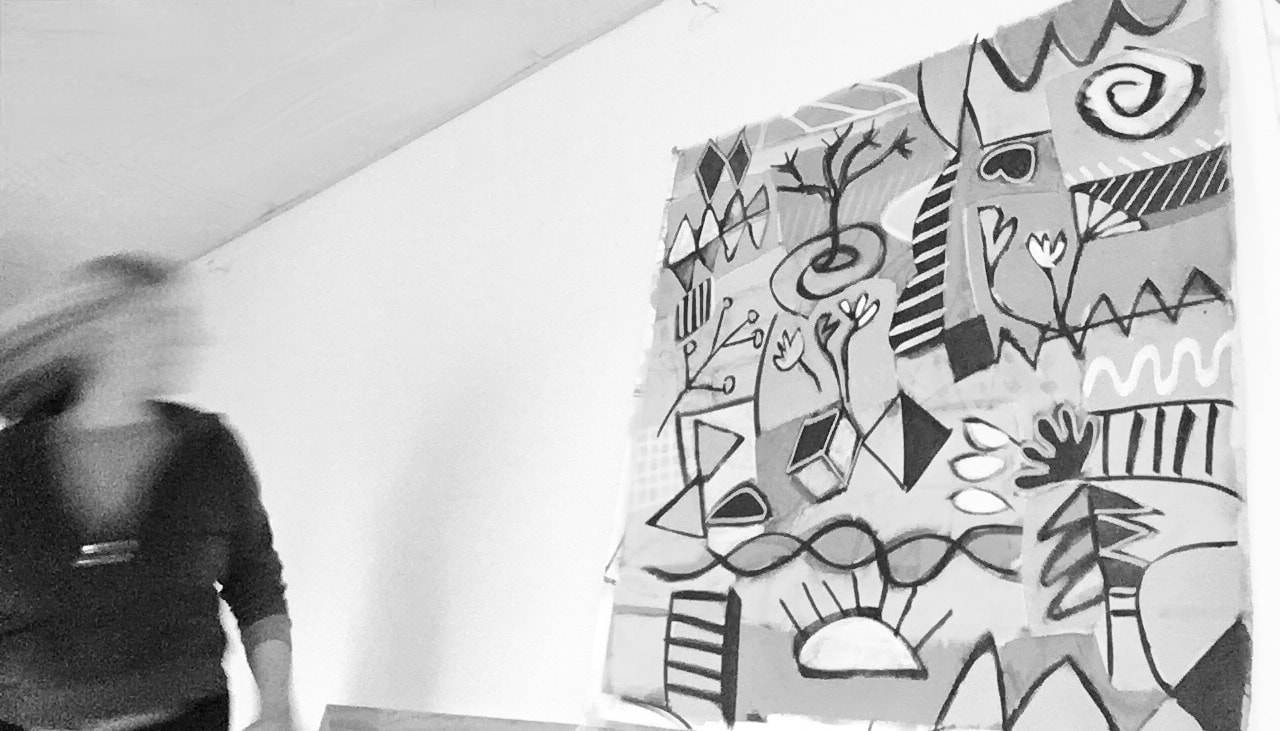
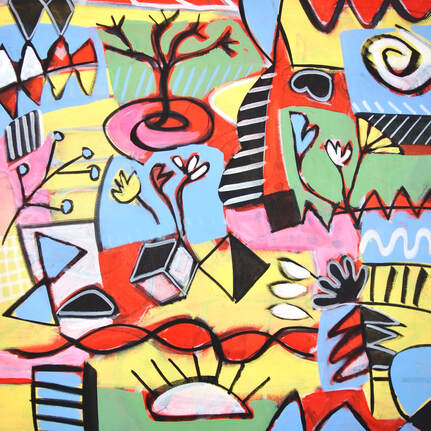
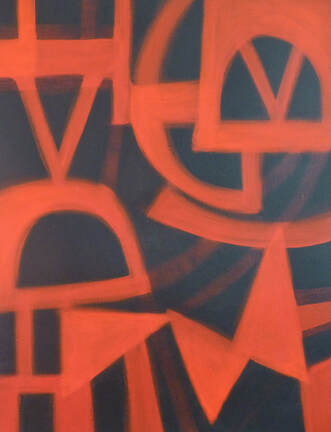
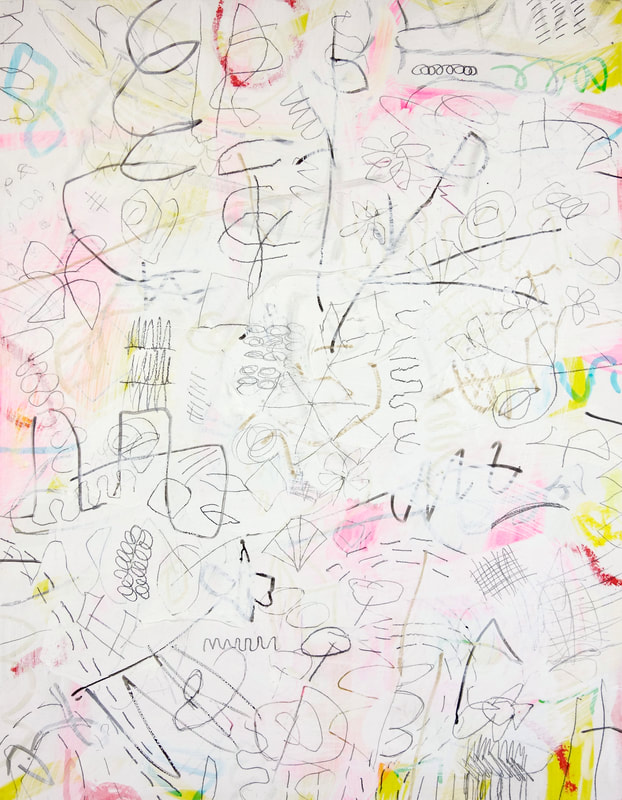
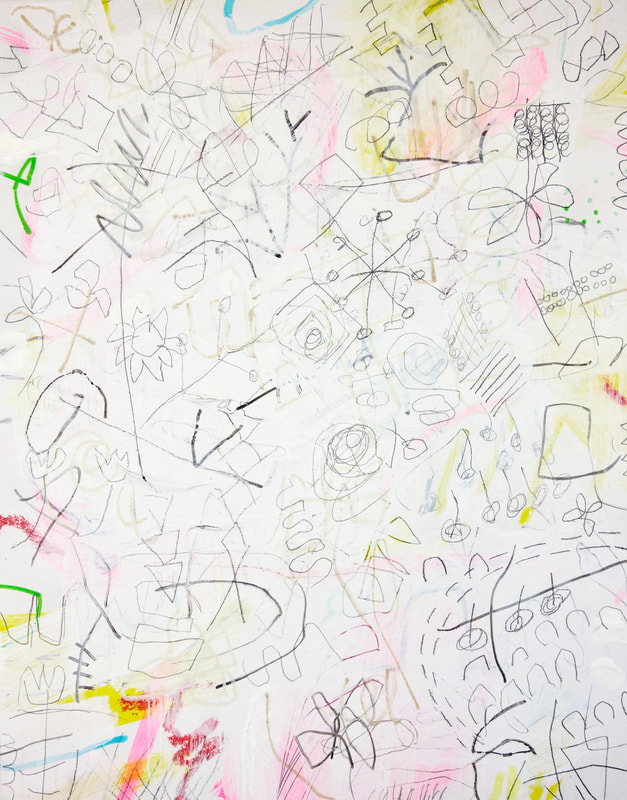
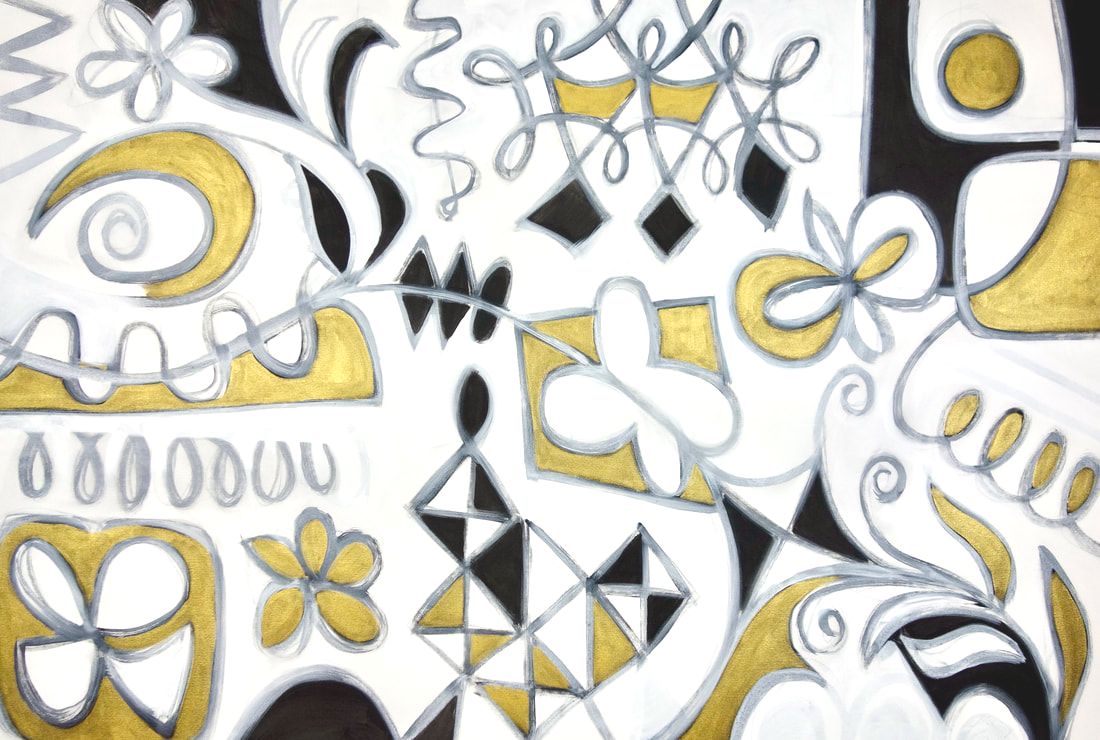
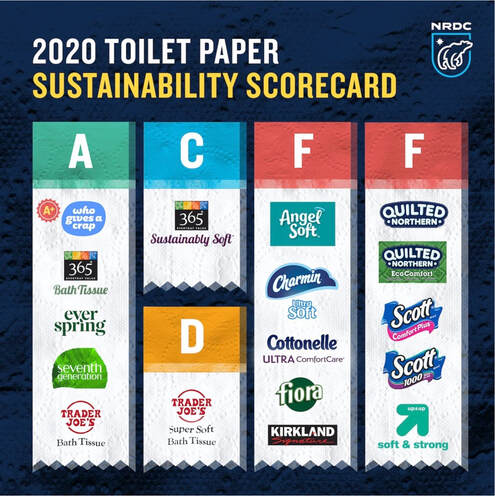
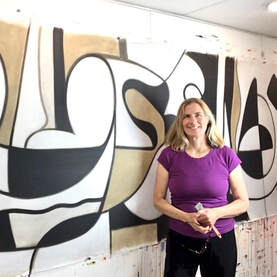
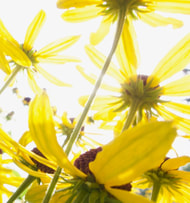
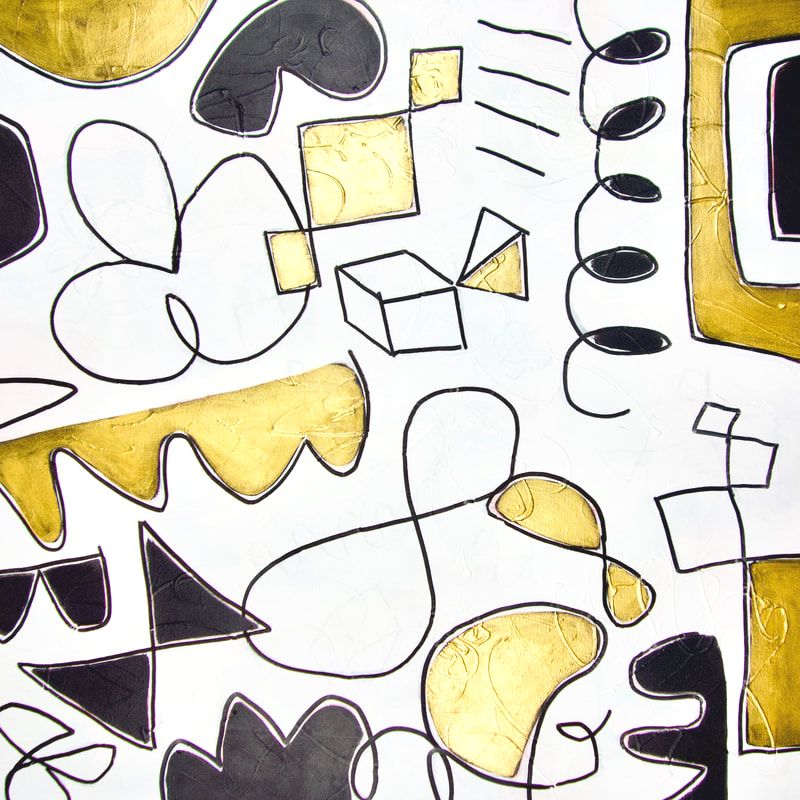
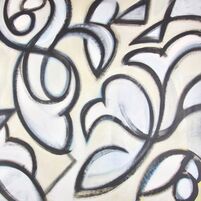

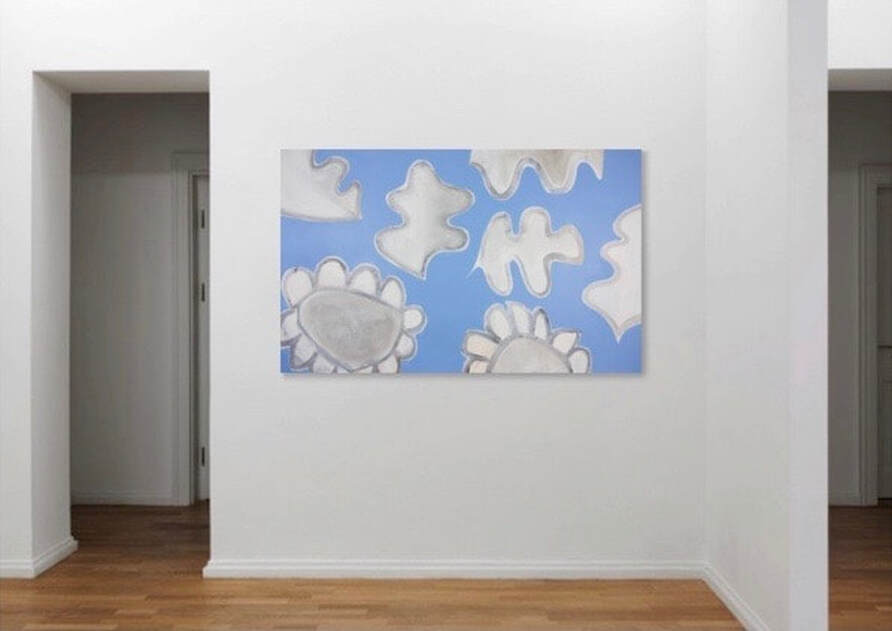
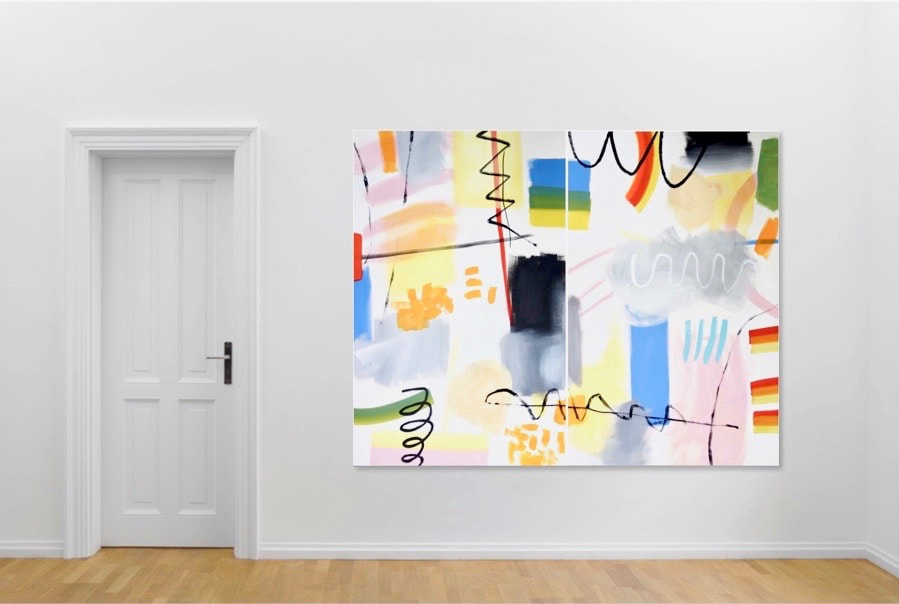
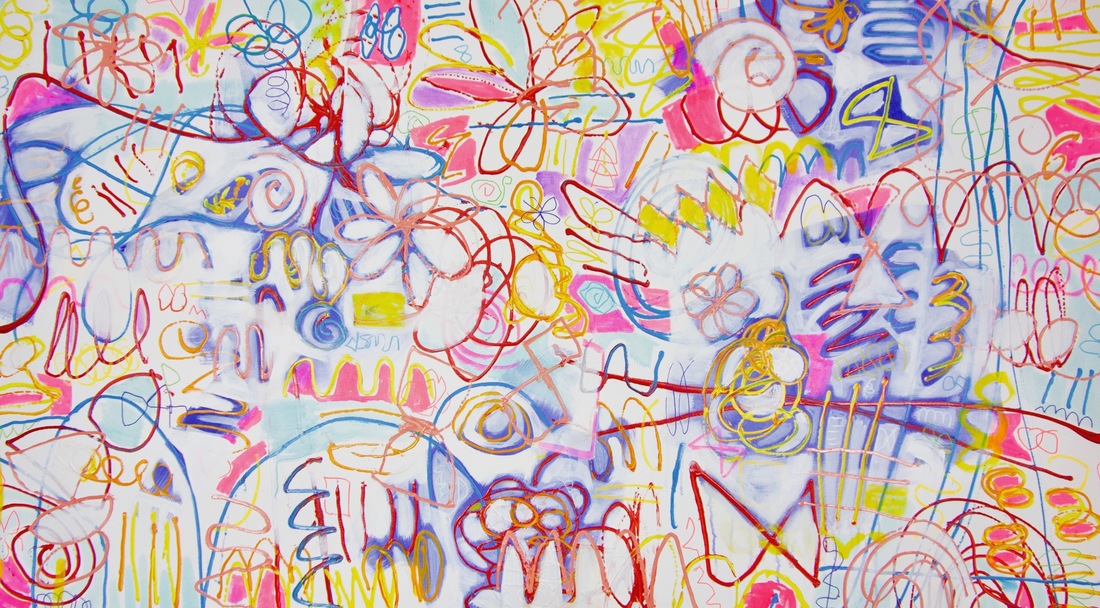

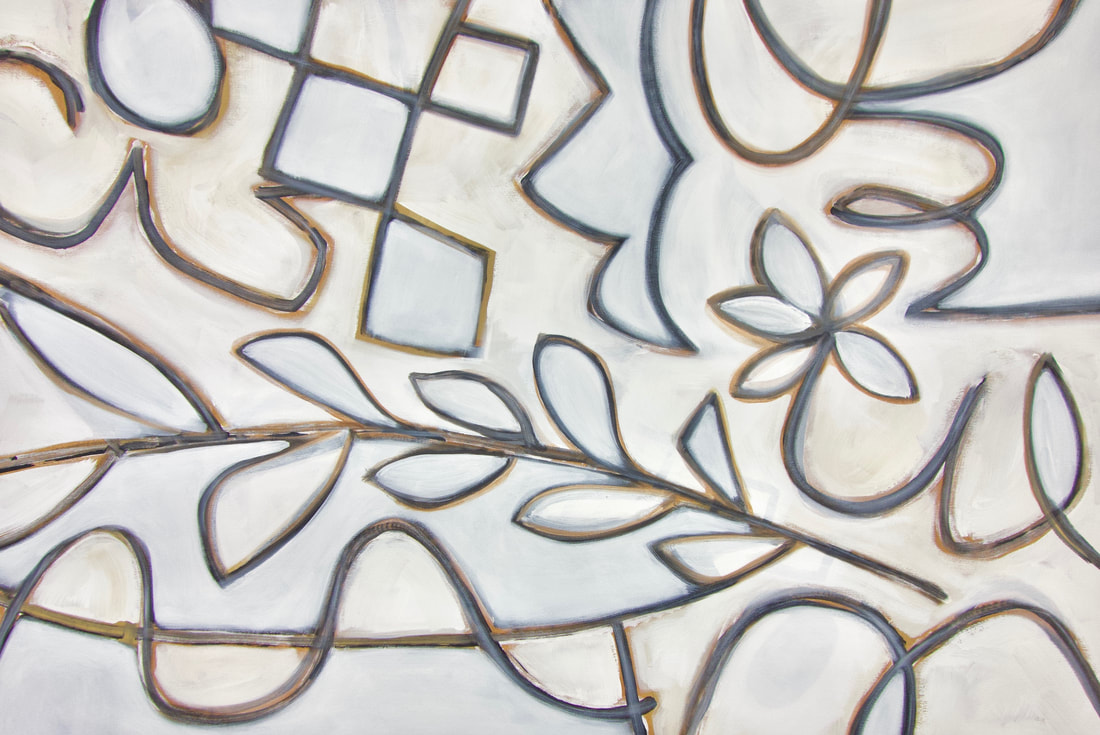
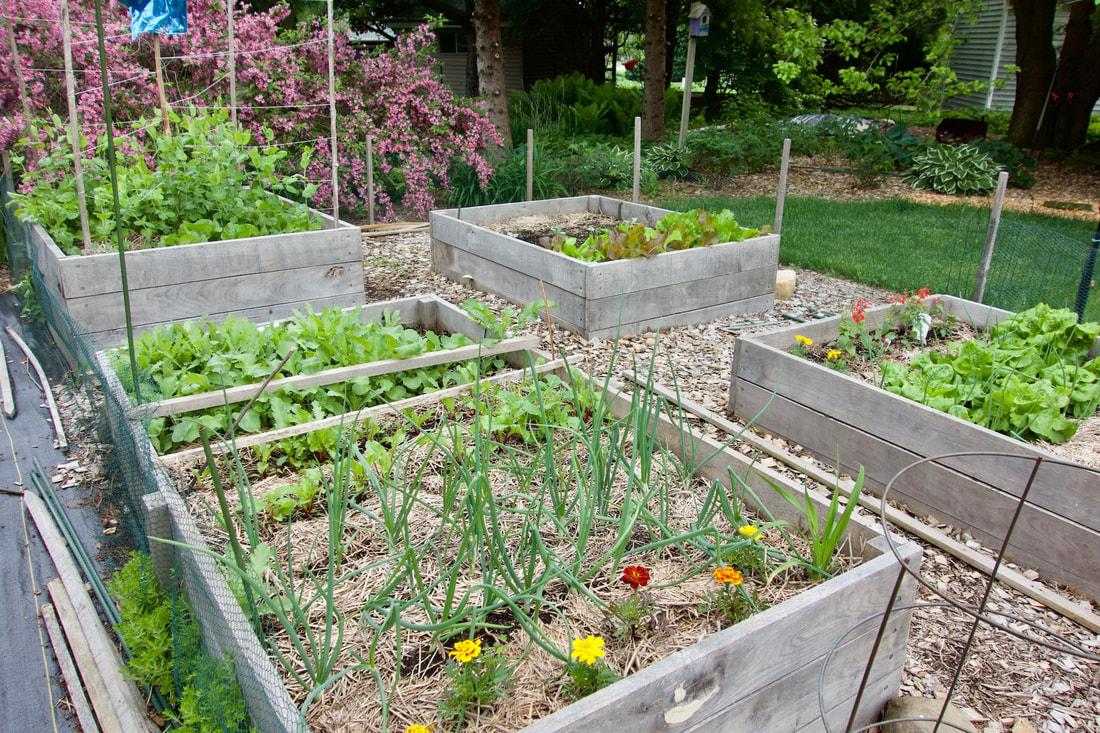
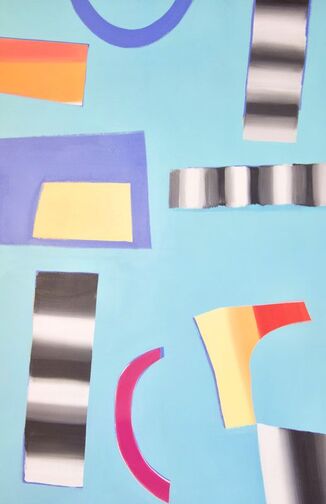
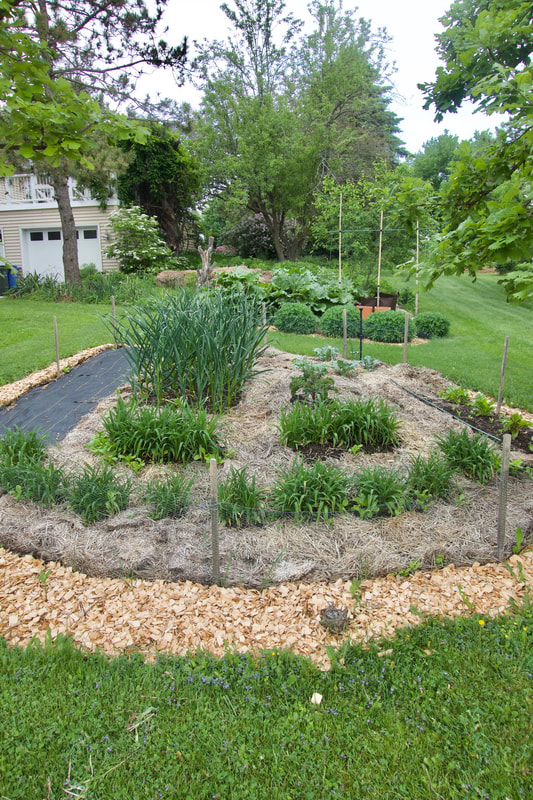
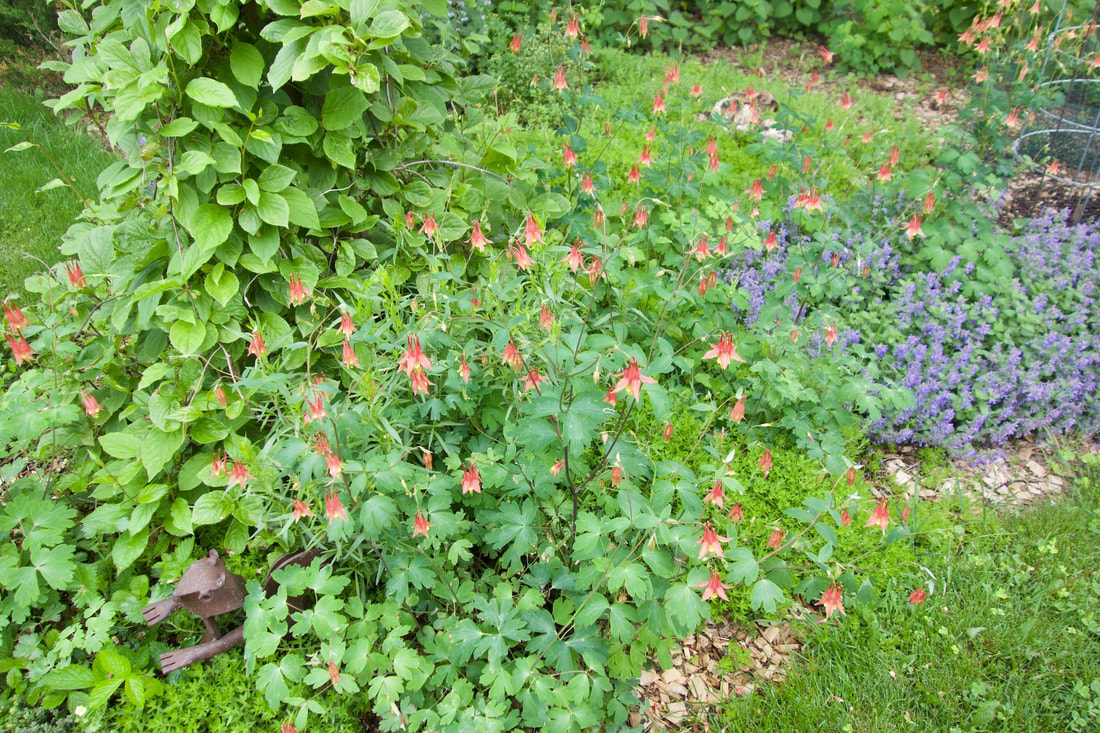
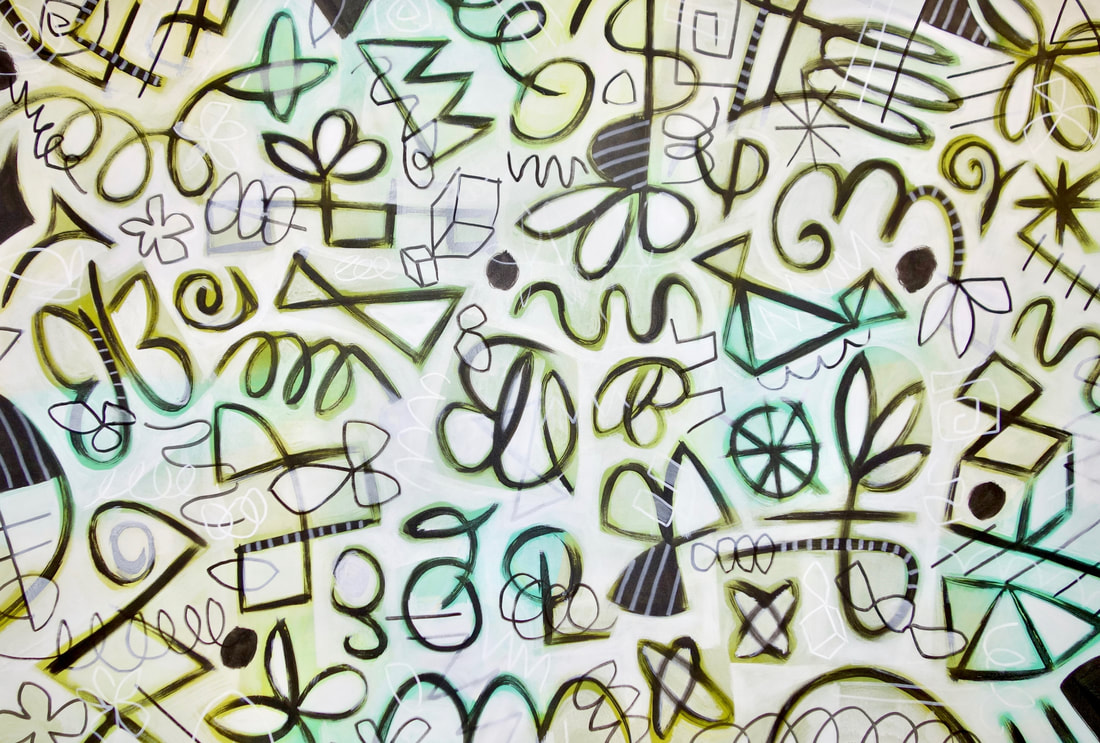
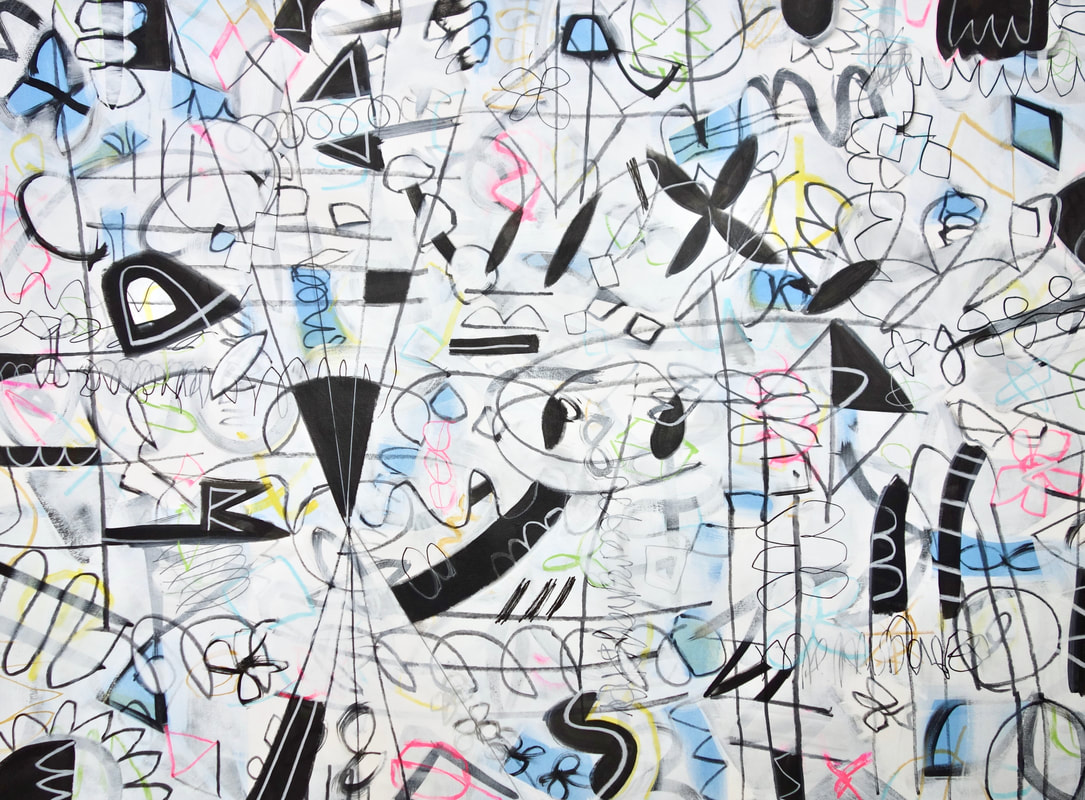
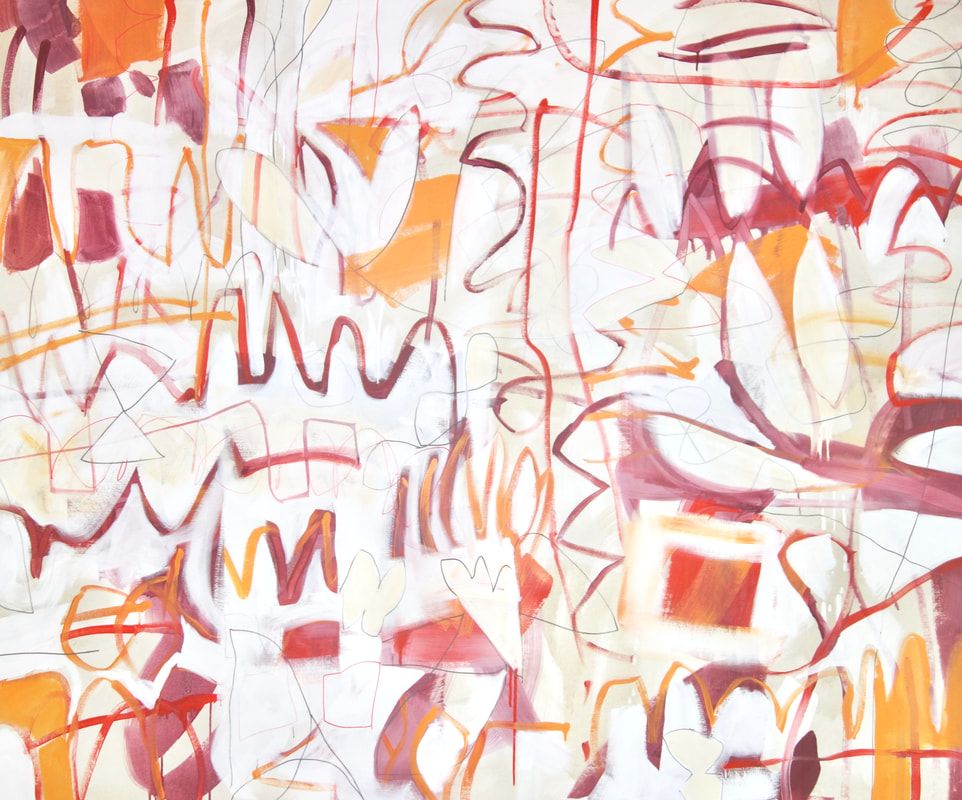
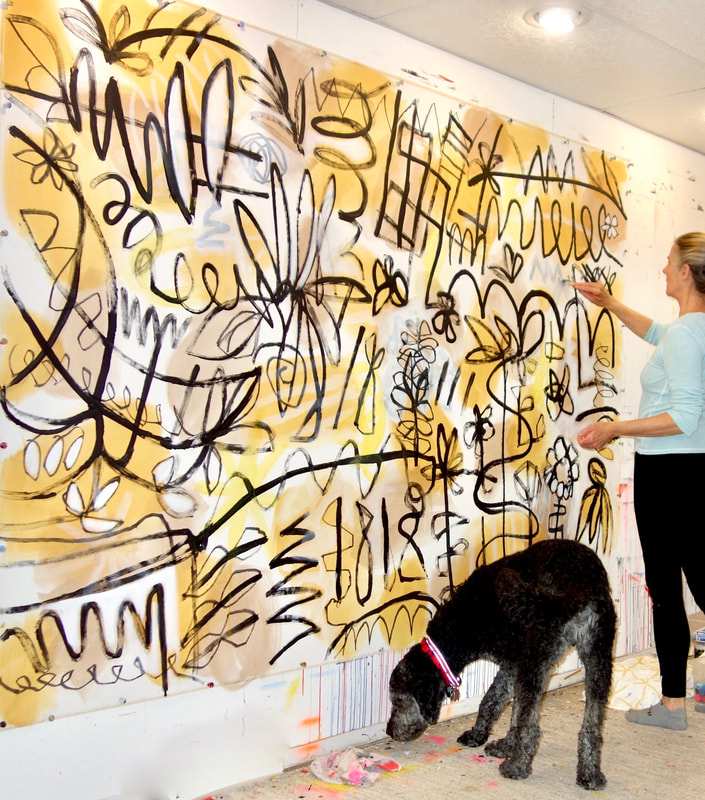
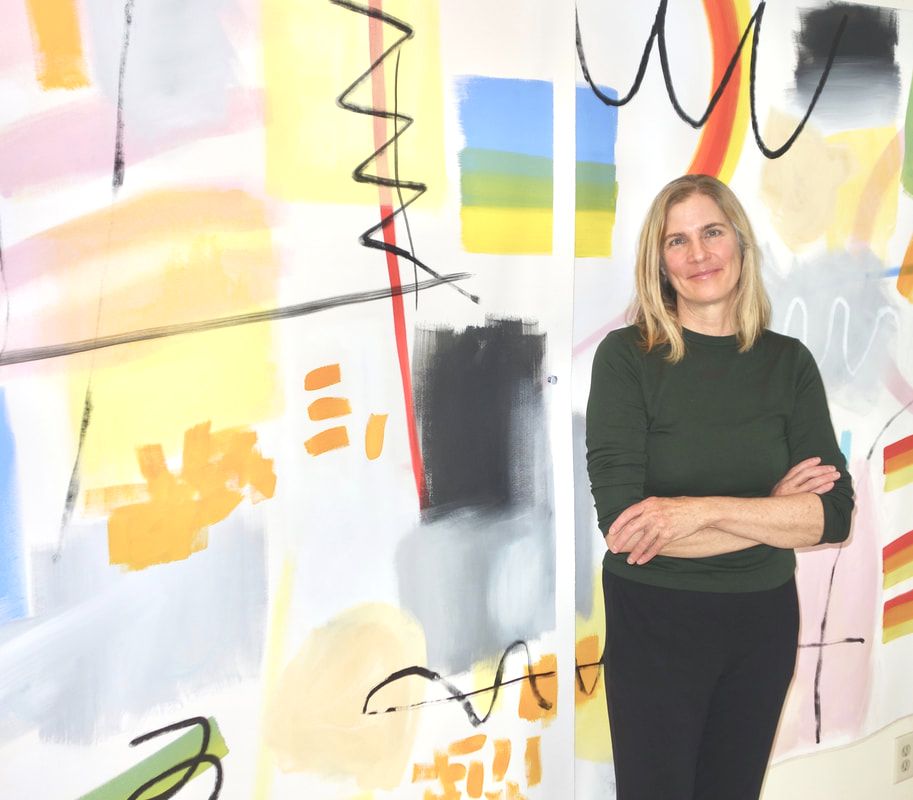
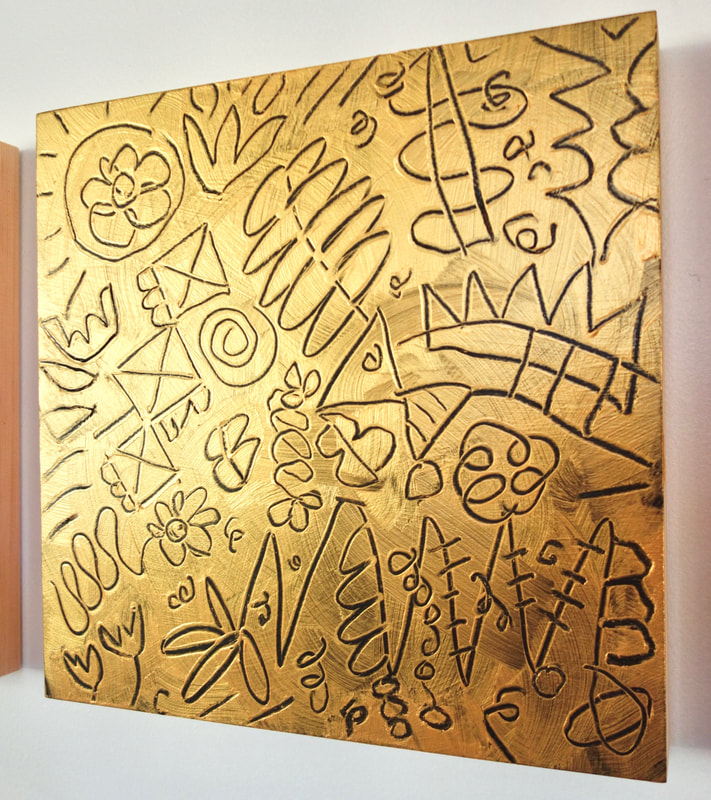
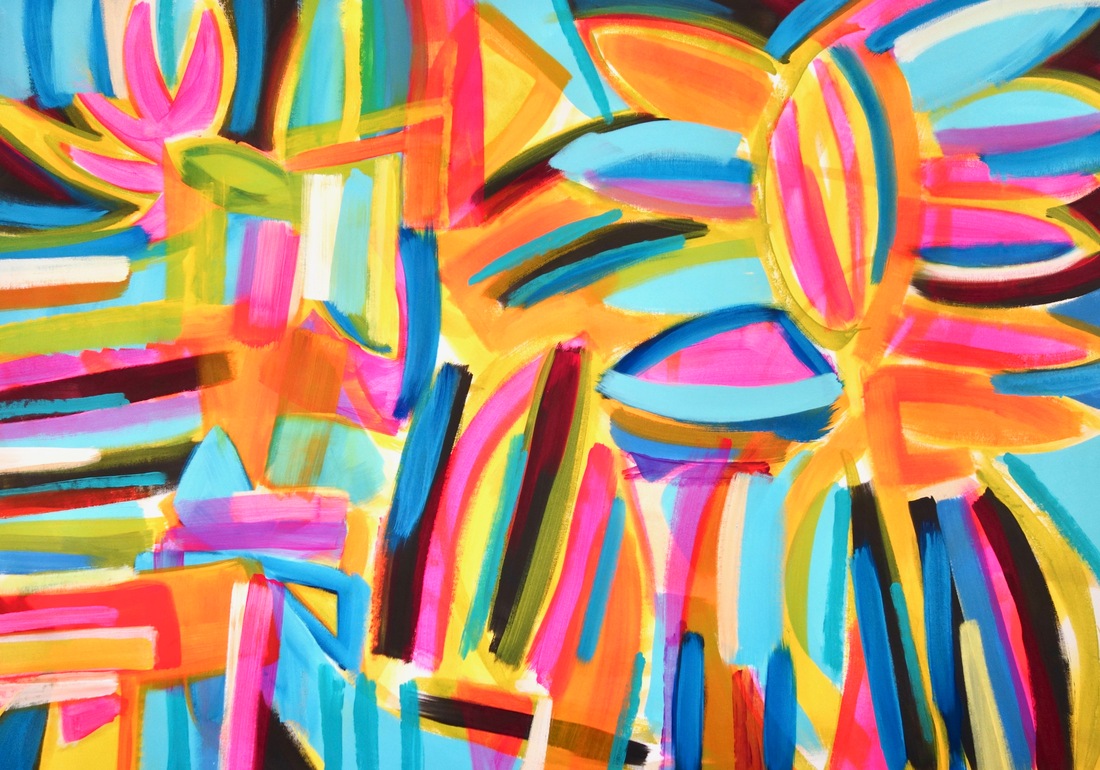
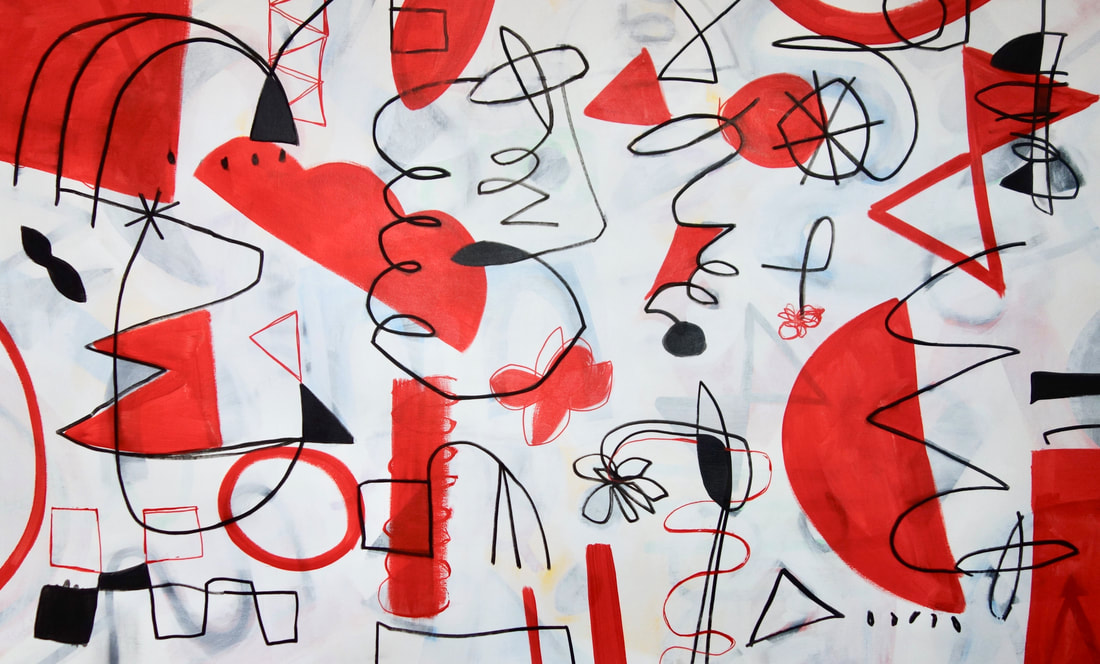
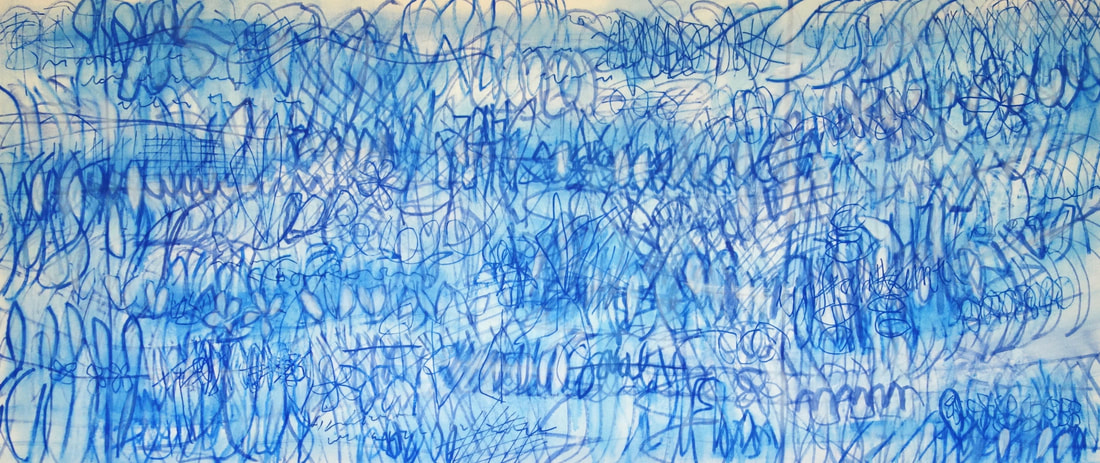

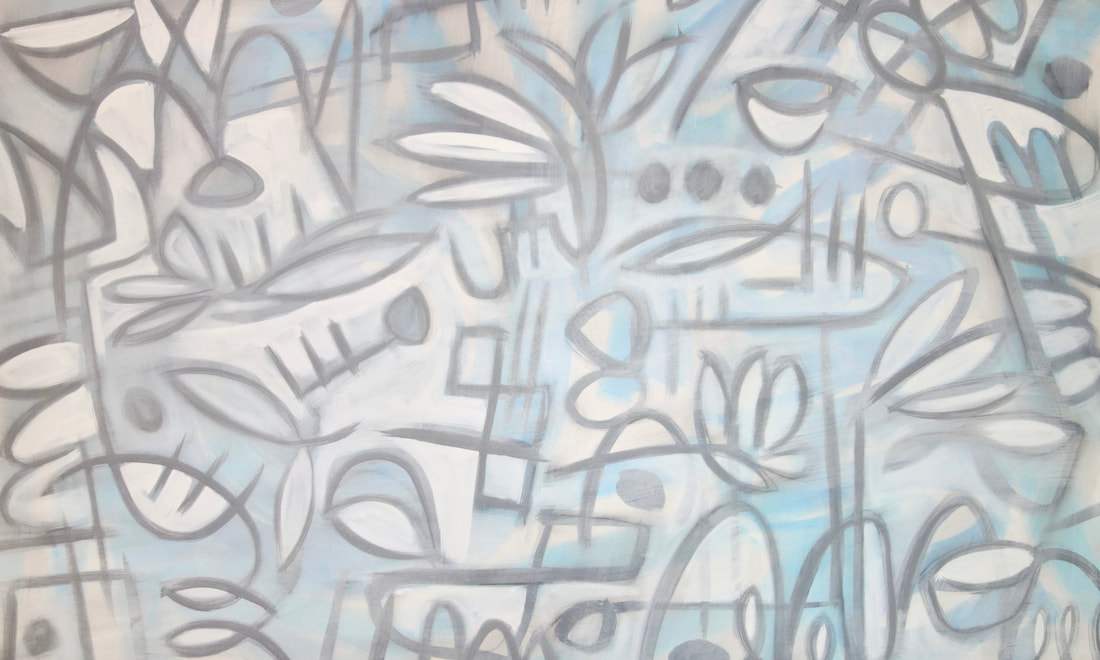
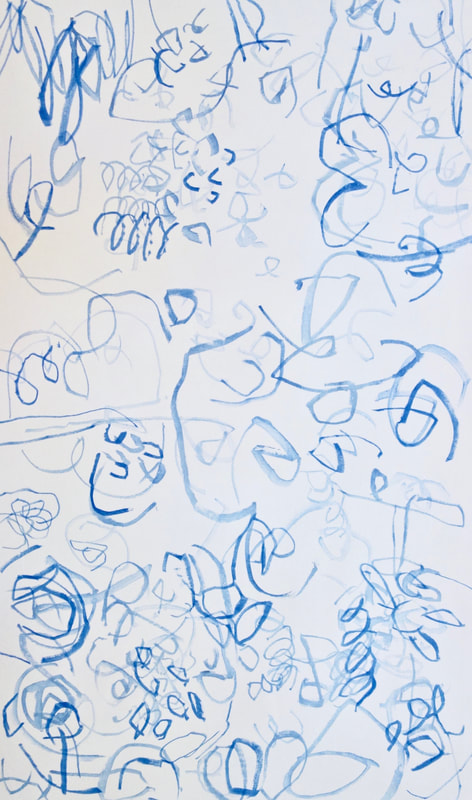
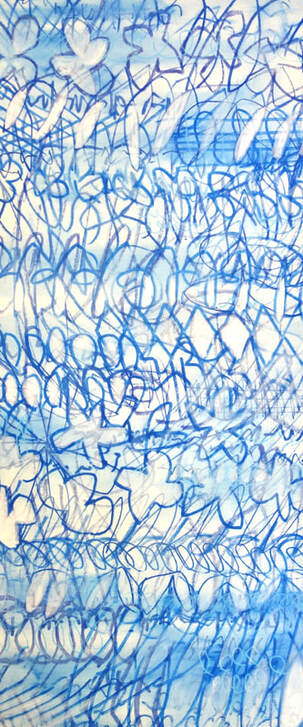
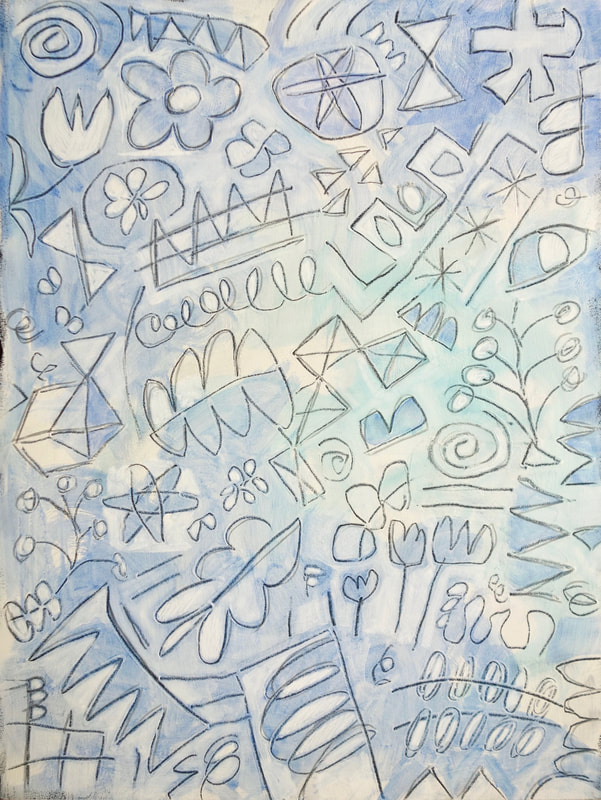
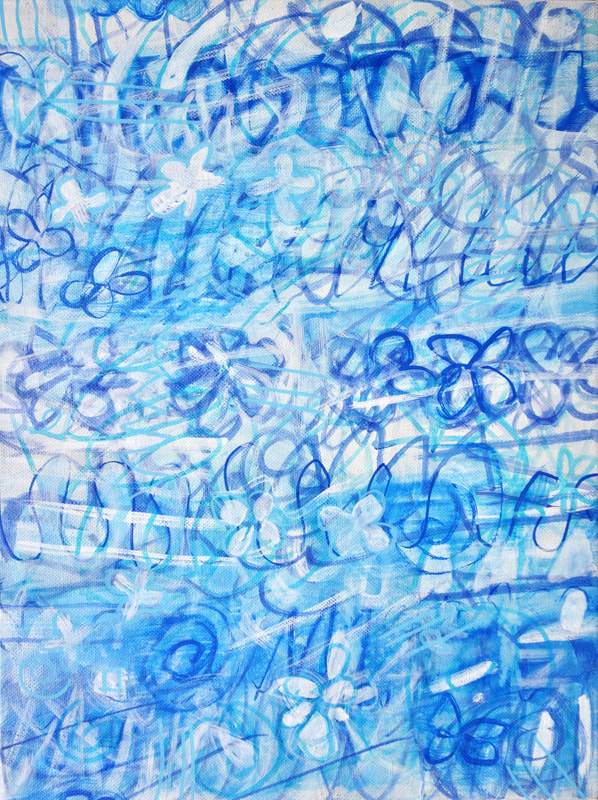
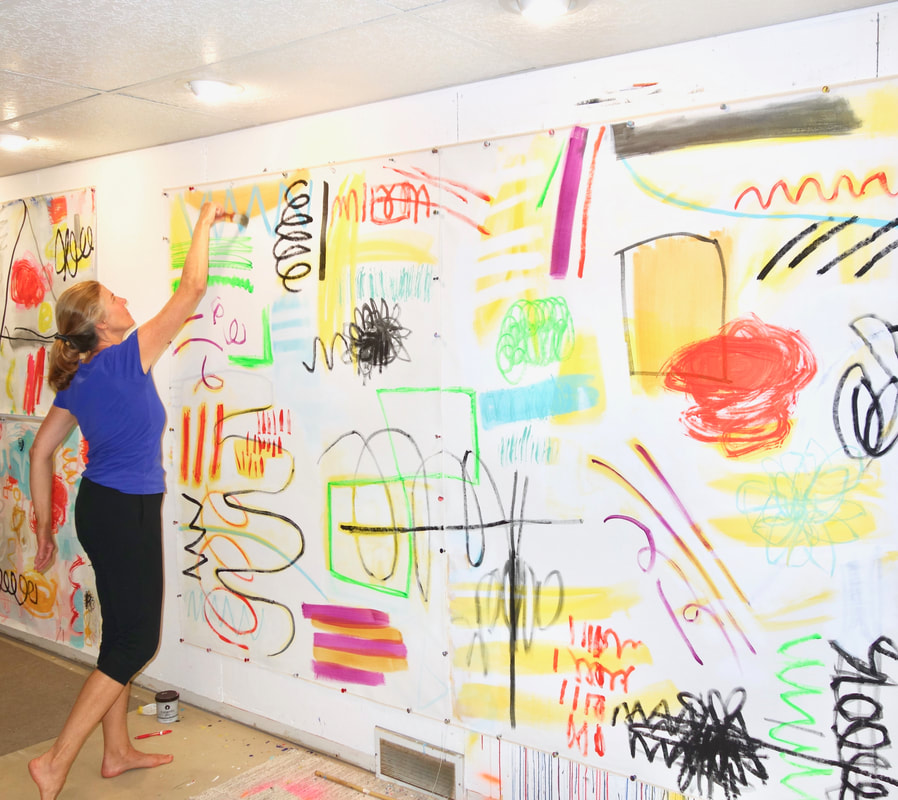
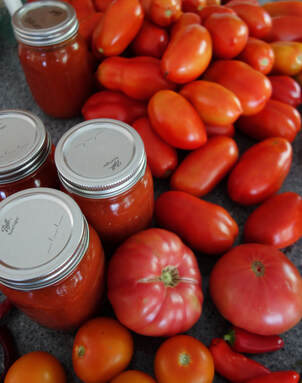


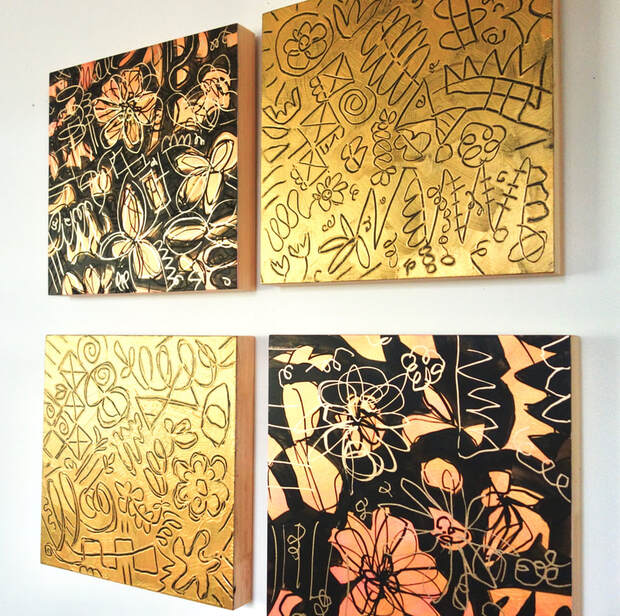
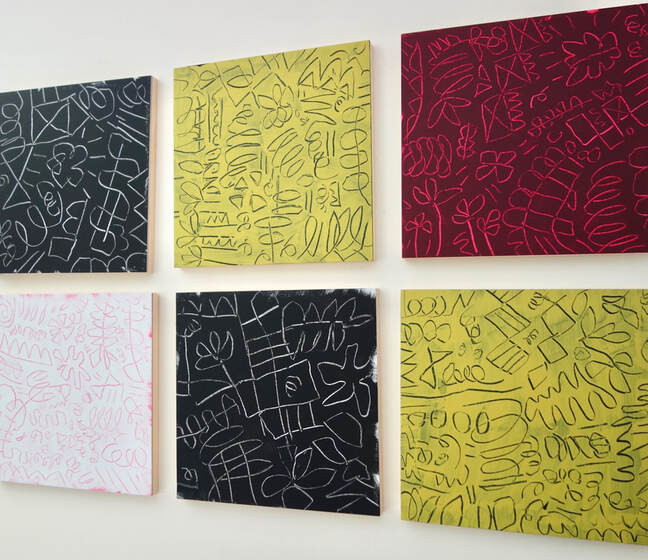
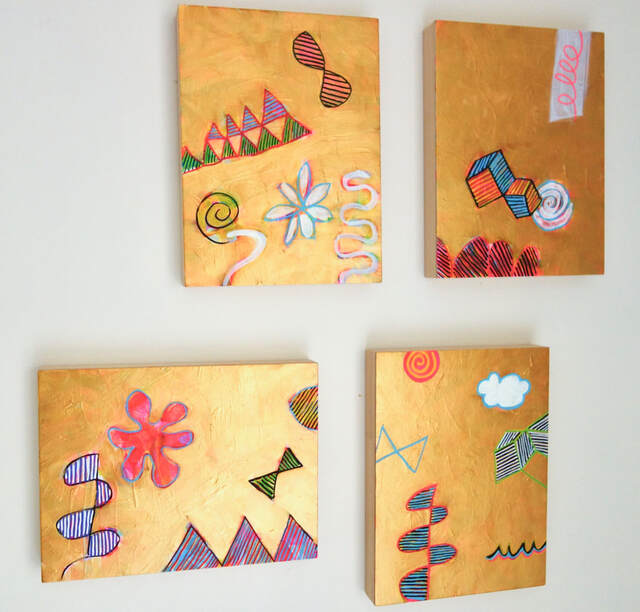
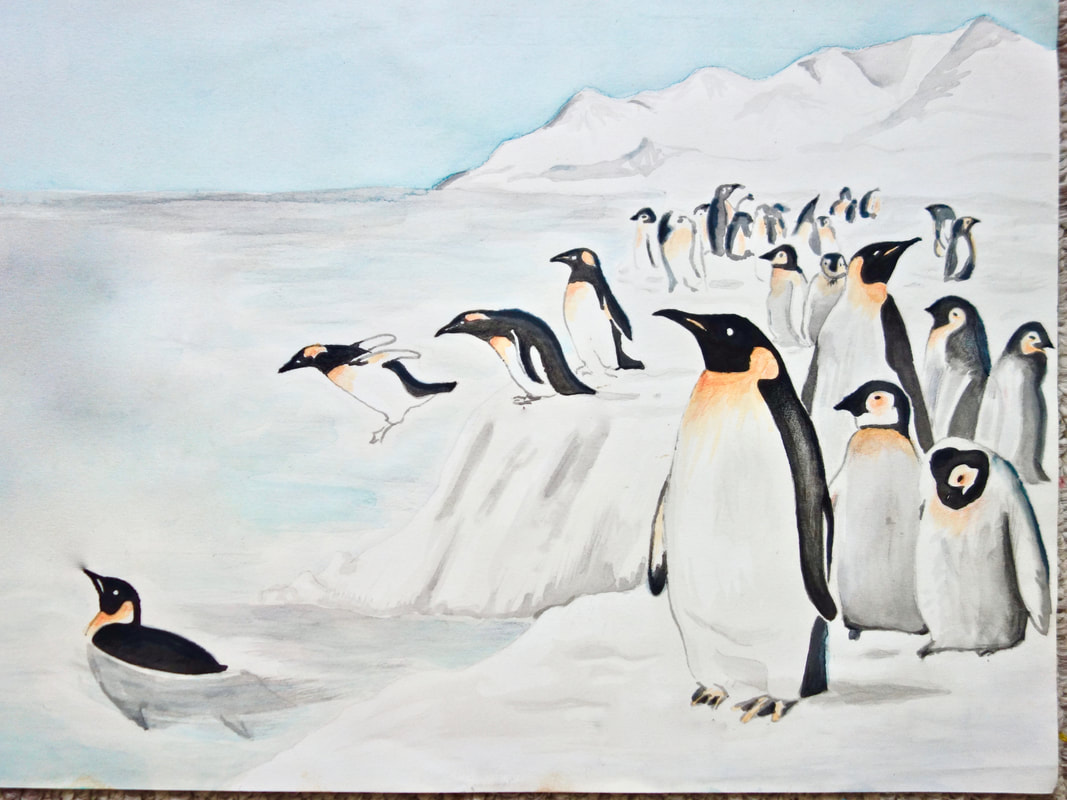
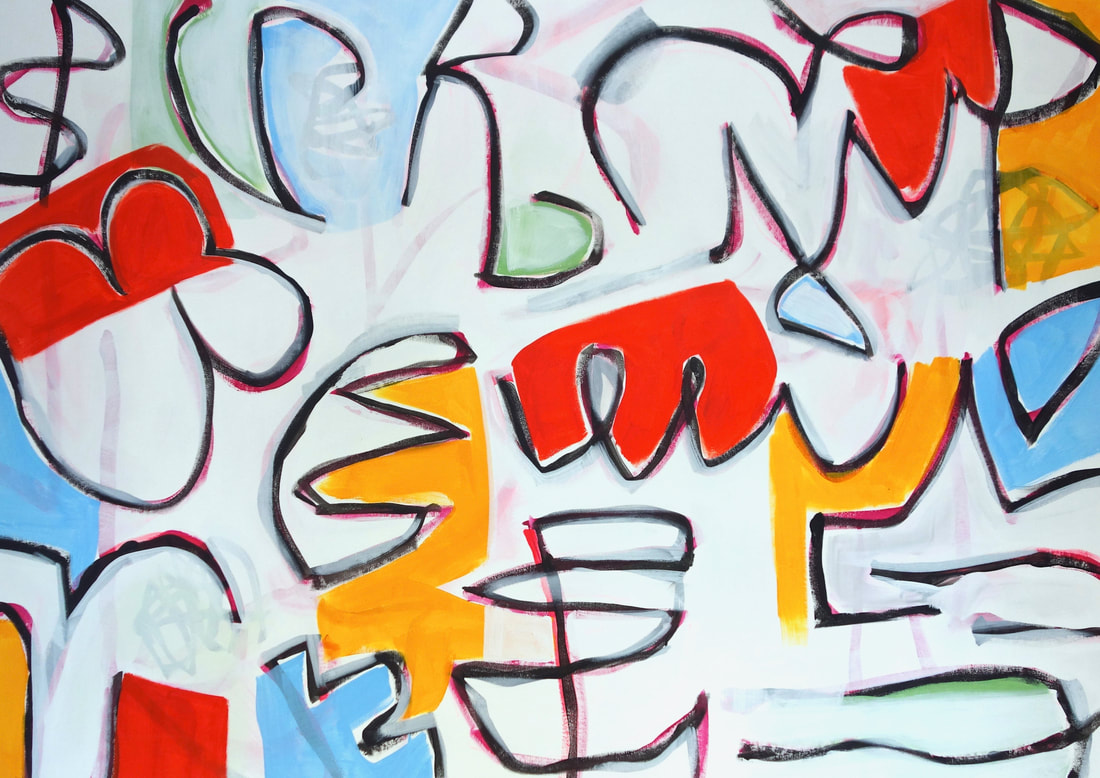
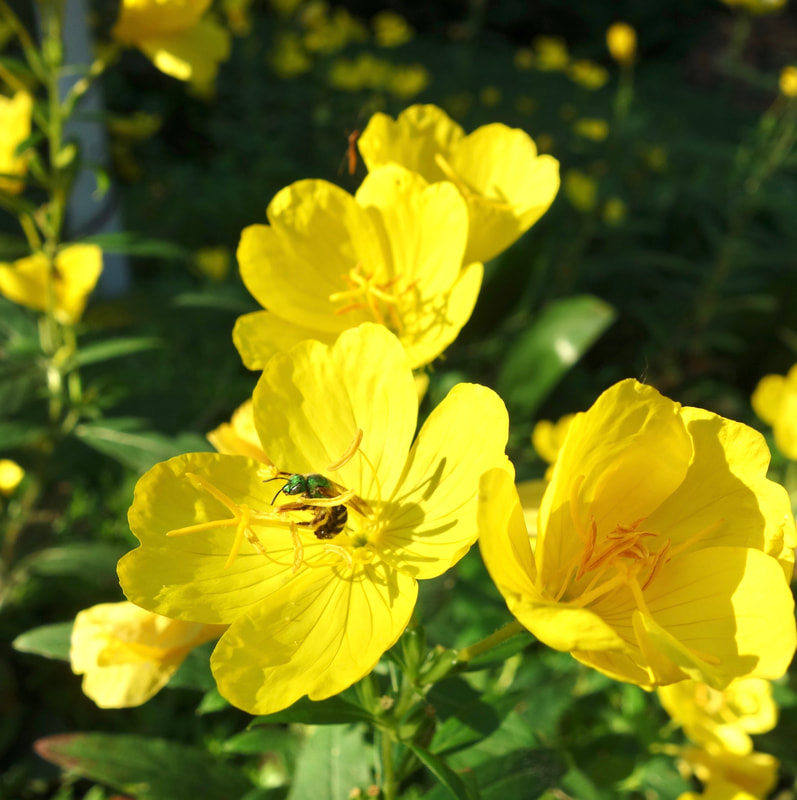
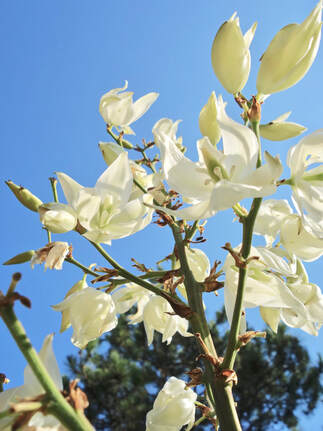
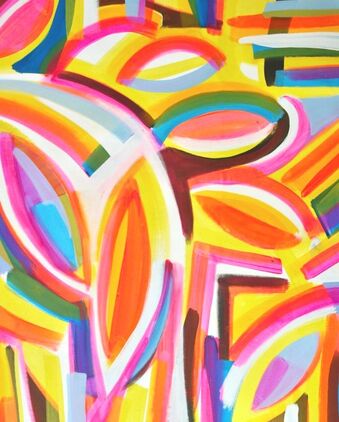
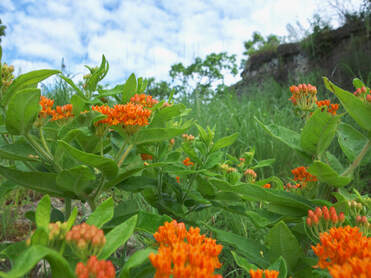
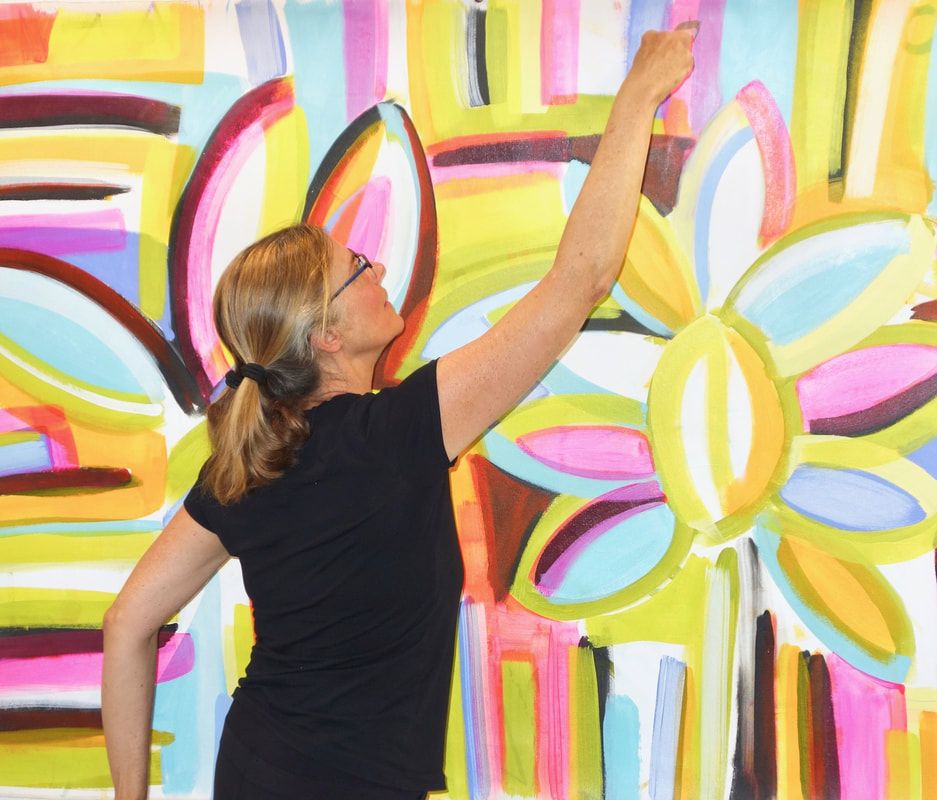
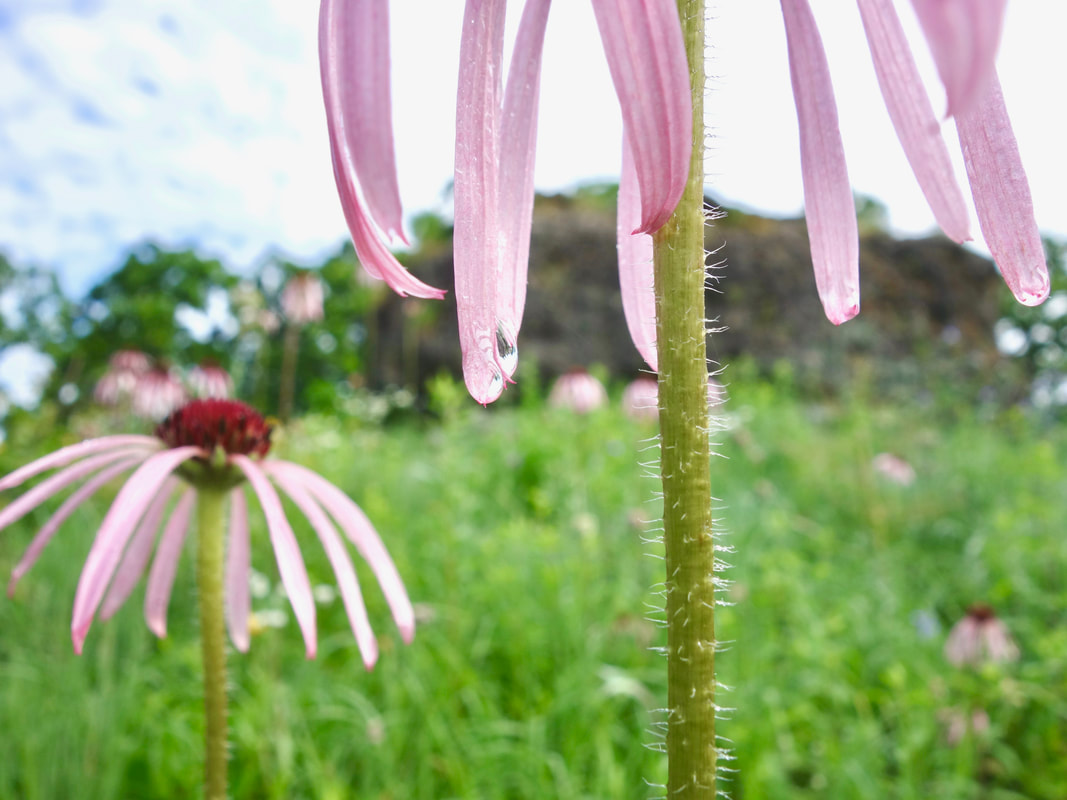
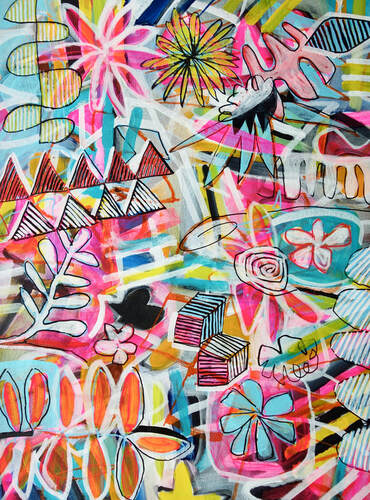
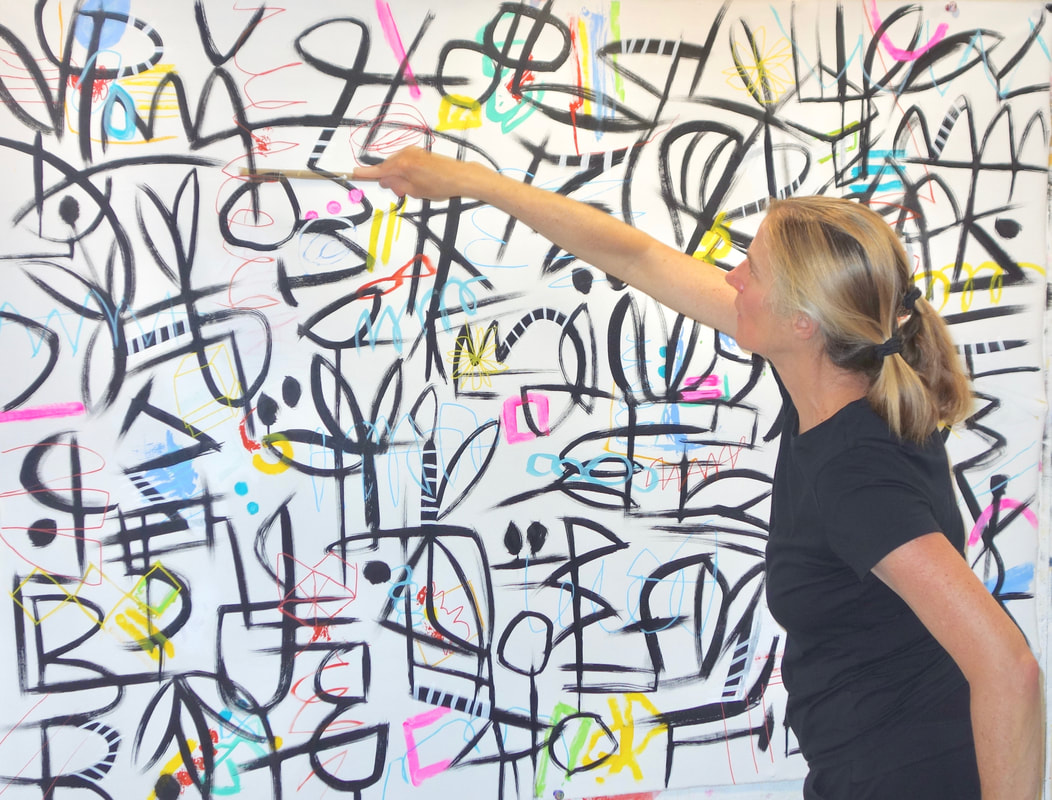
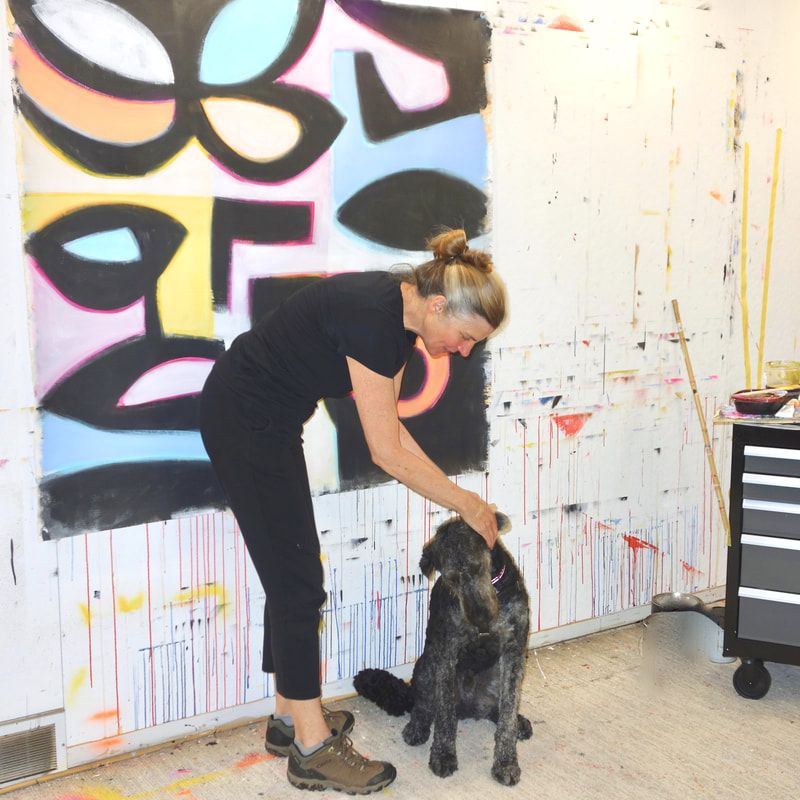
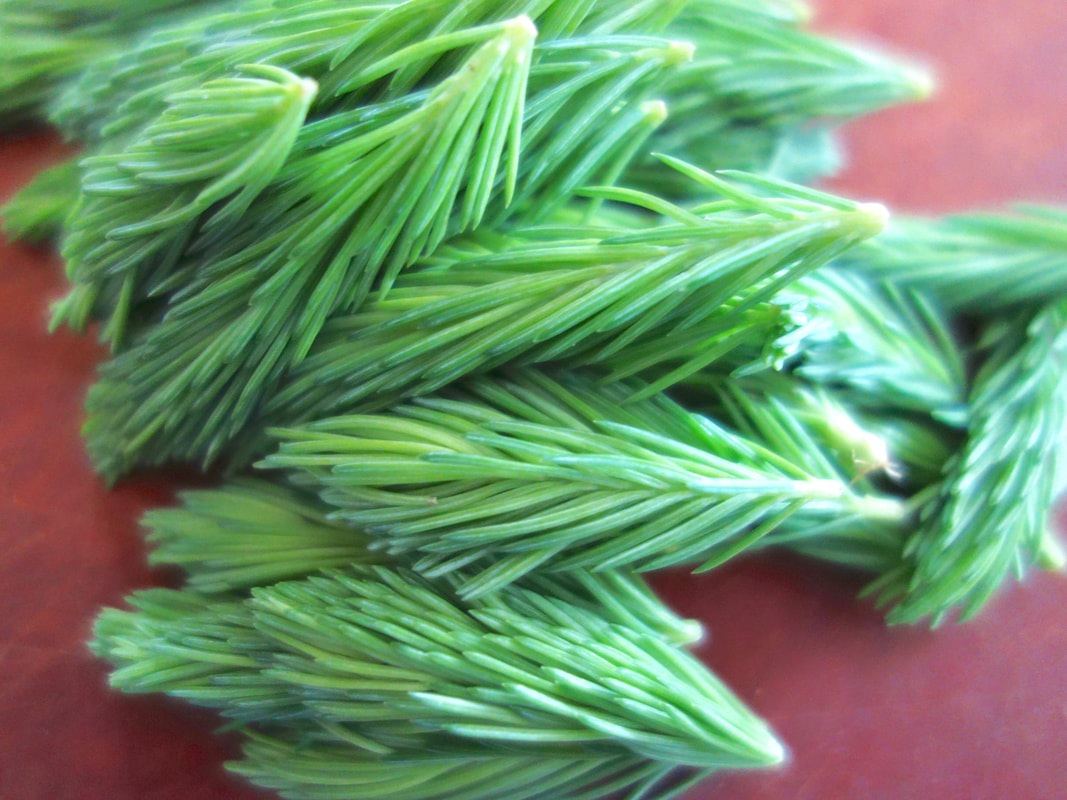
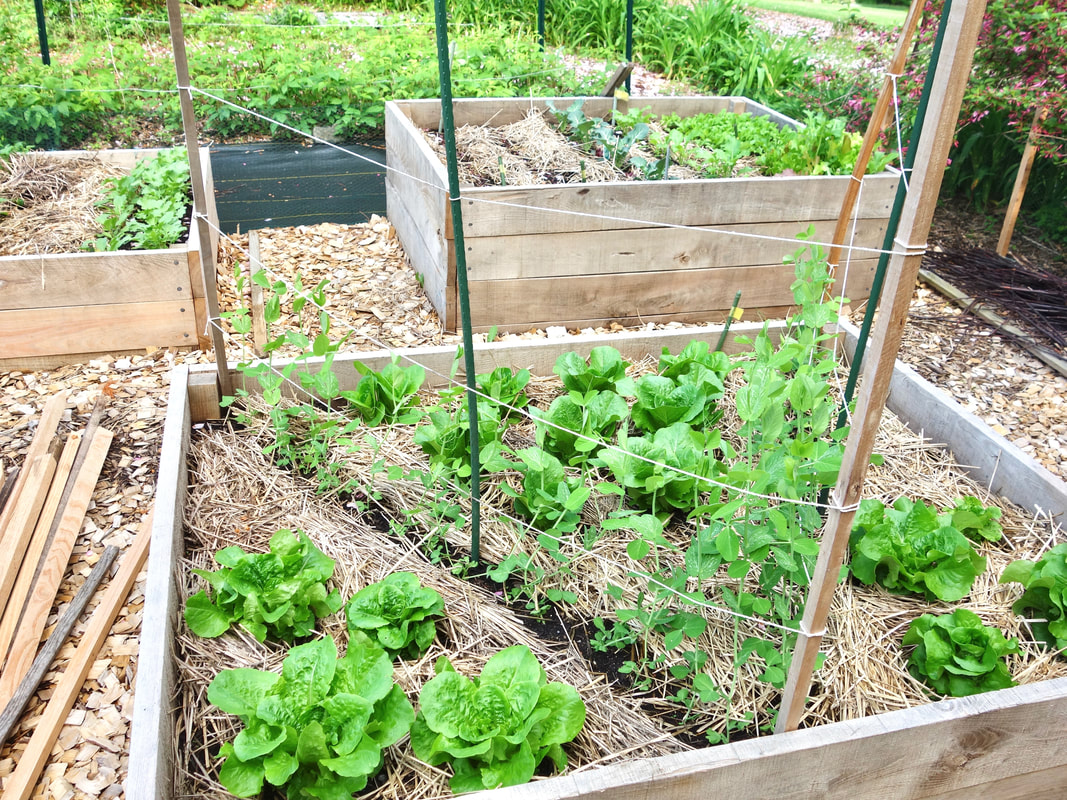
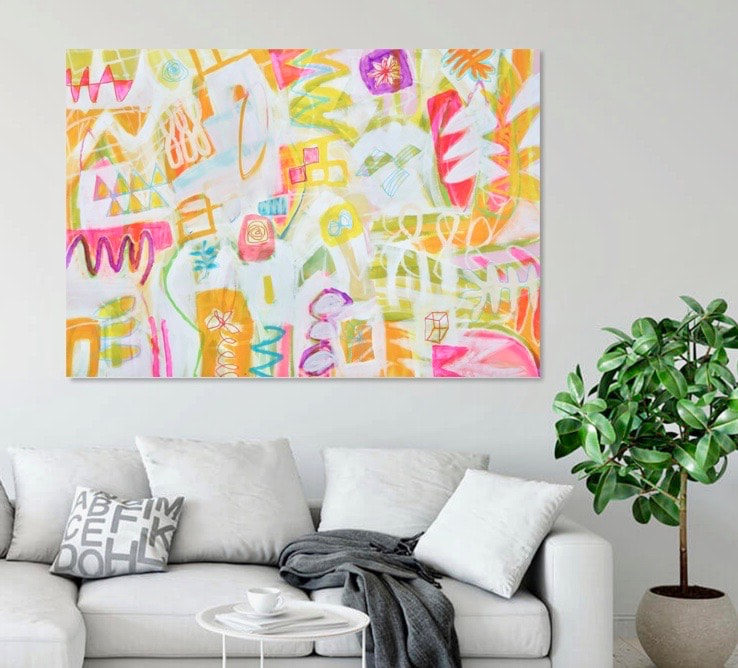
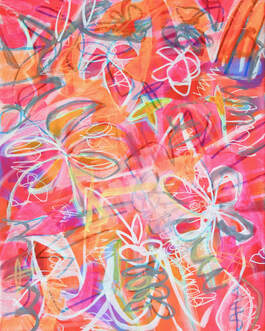
 RSS Feed
RSS Feed